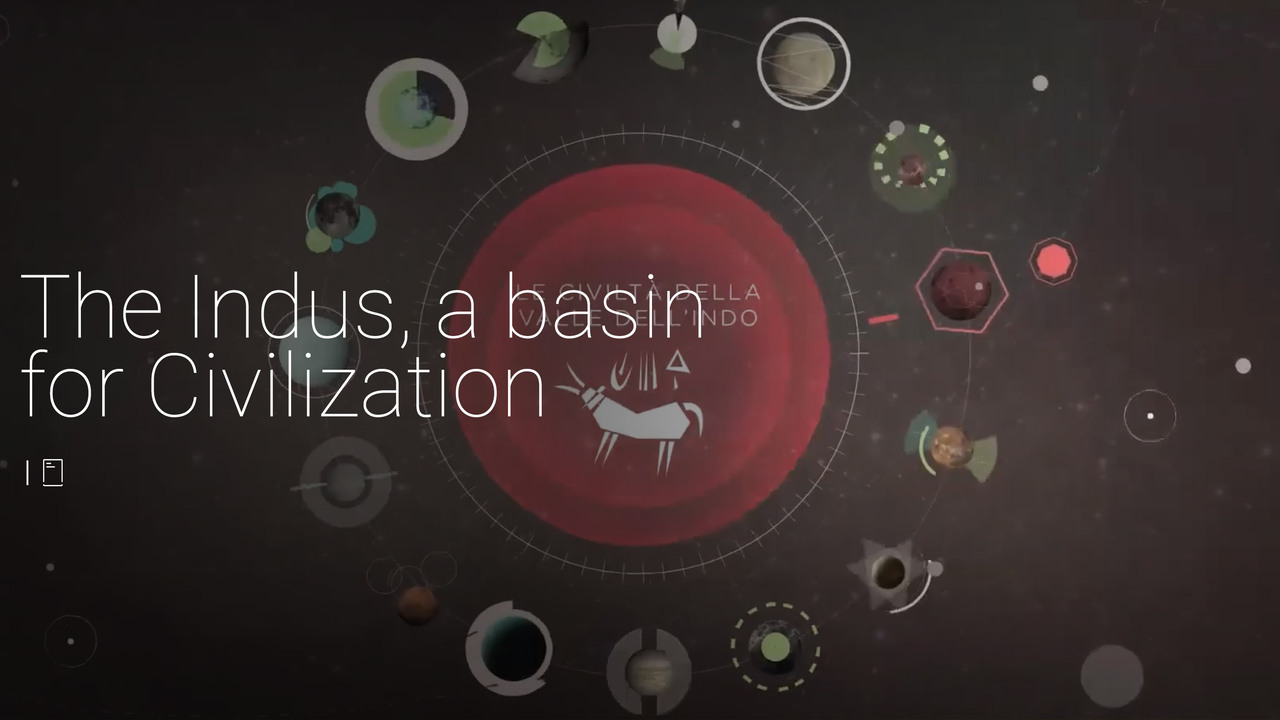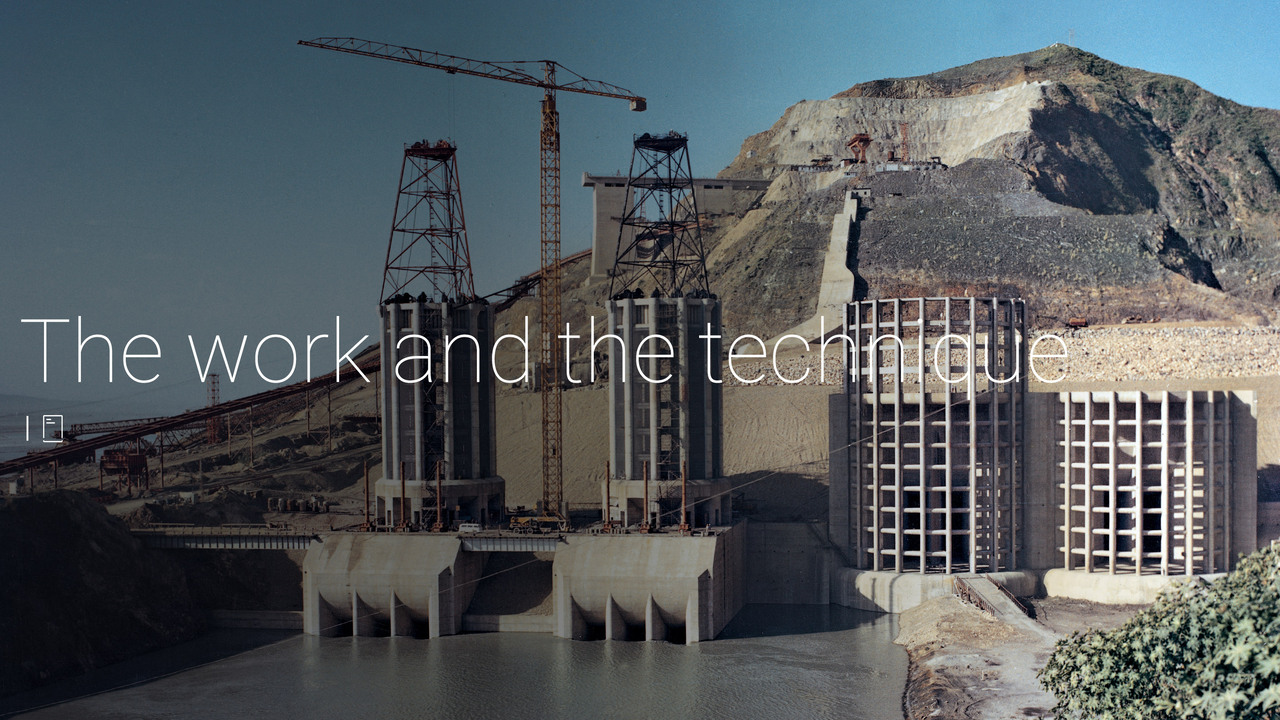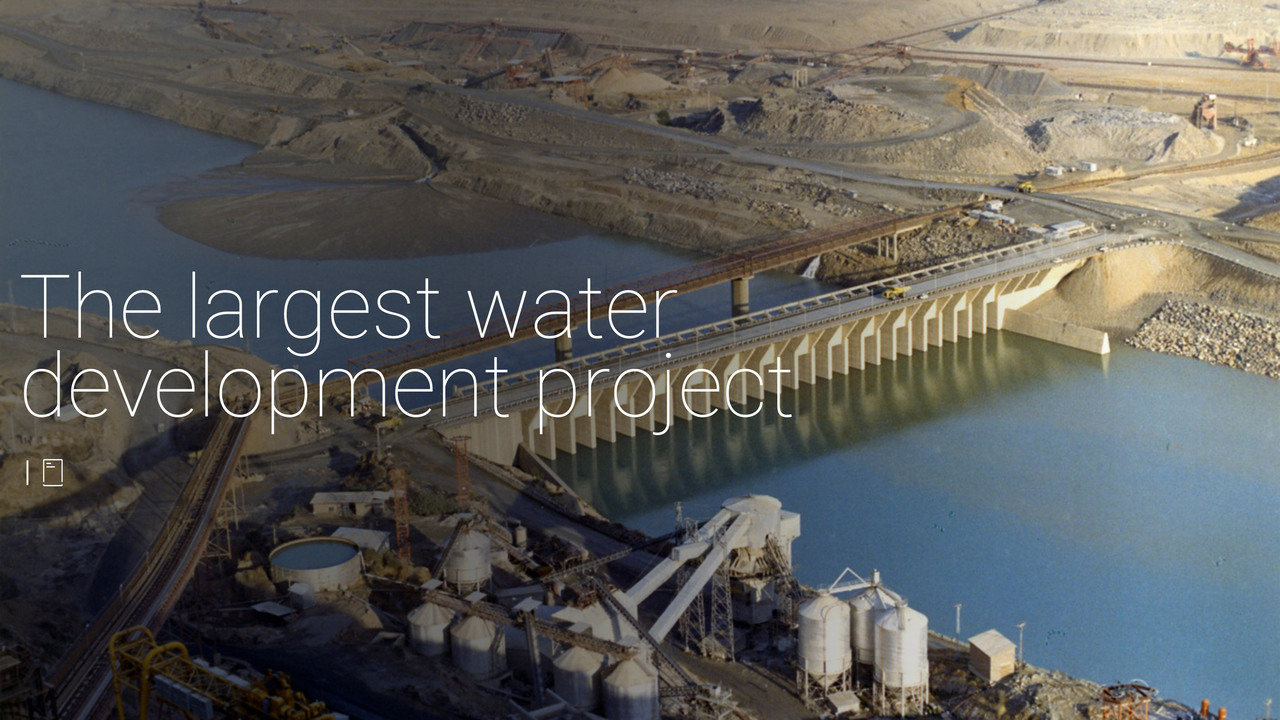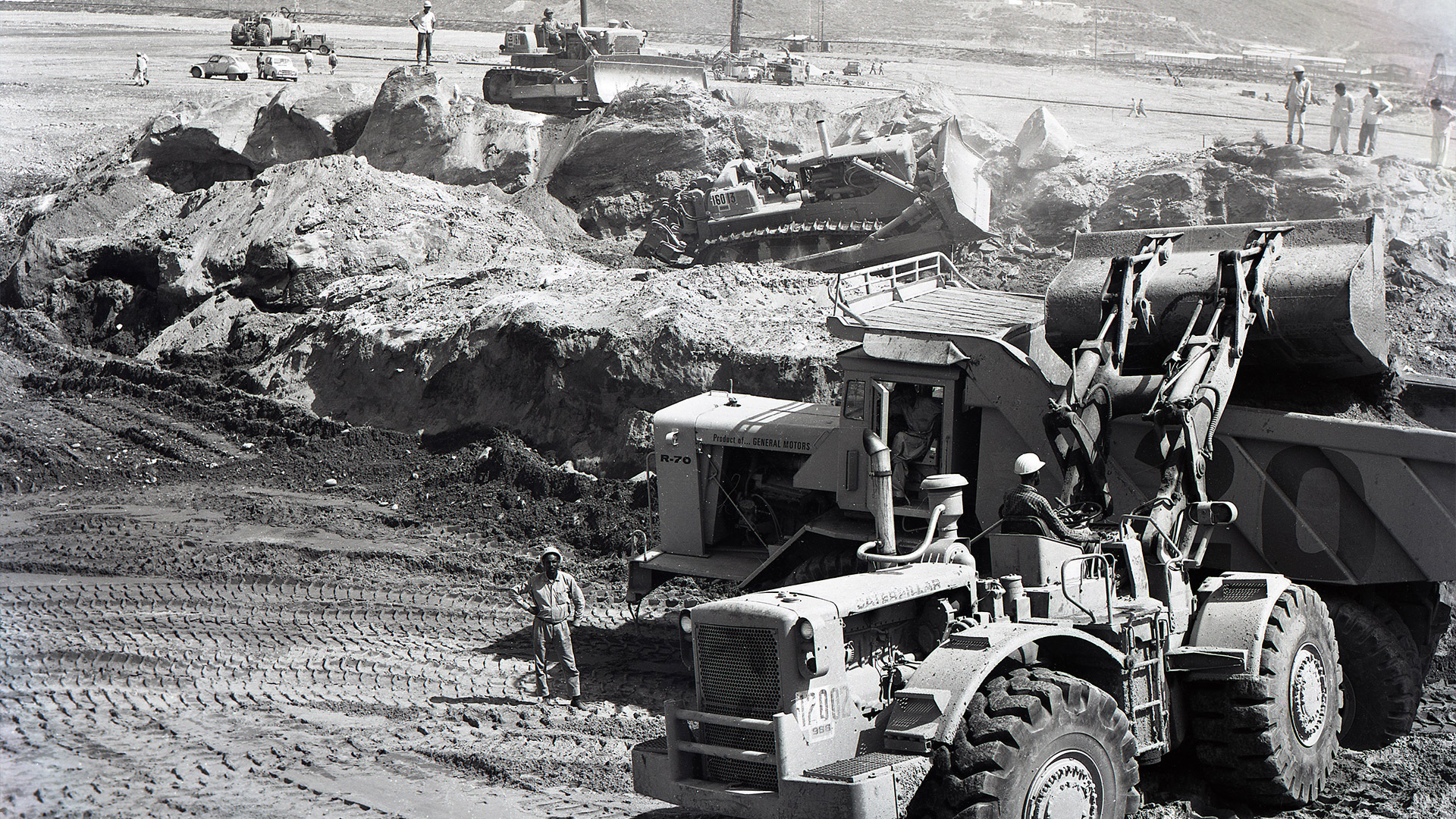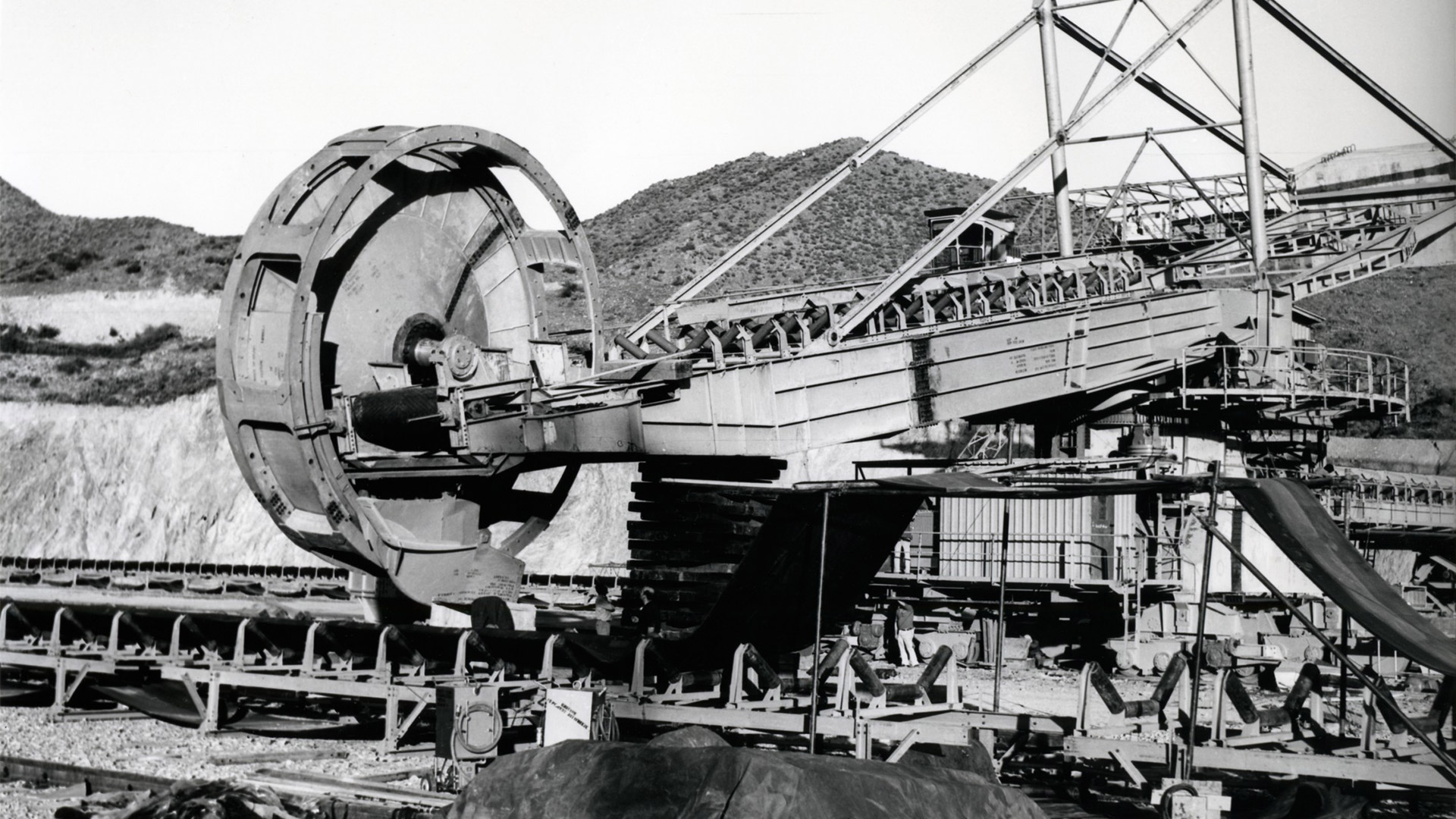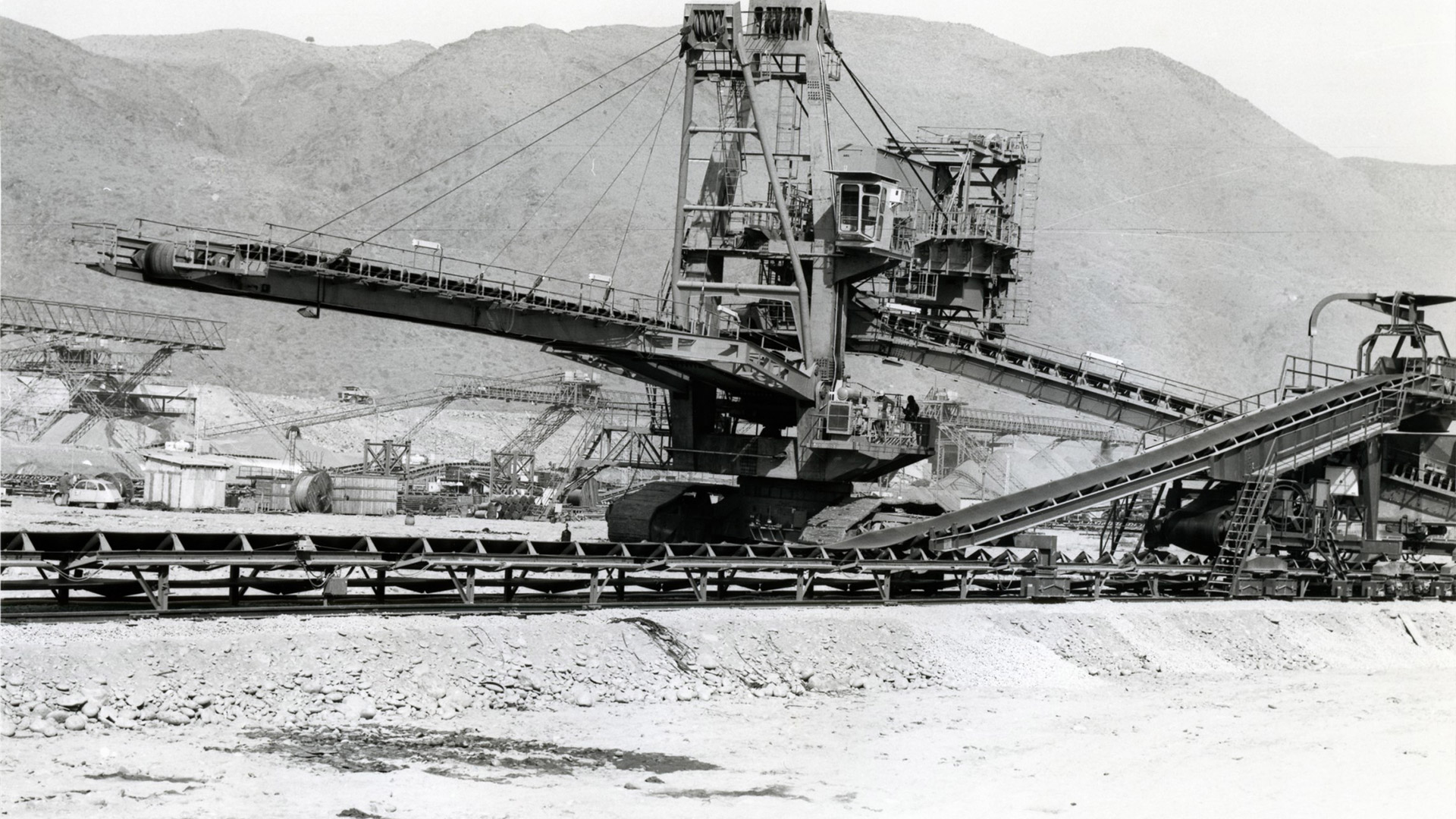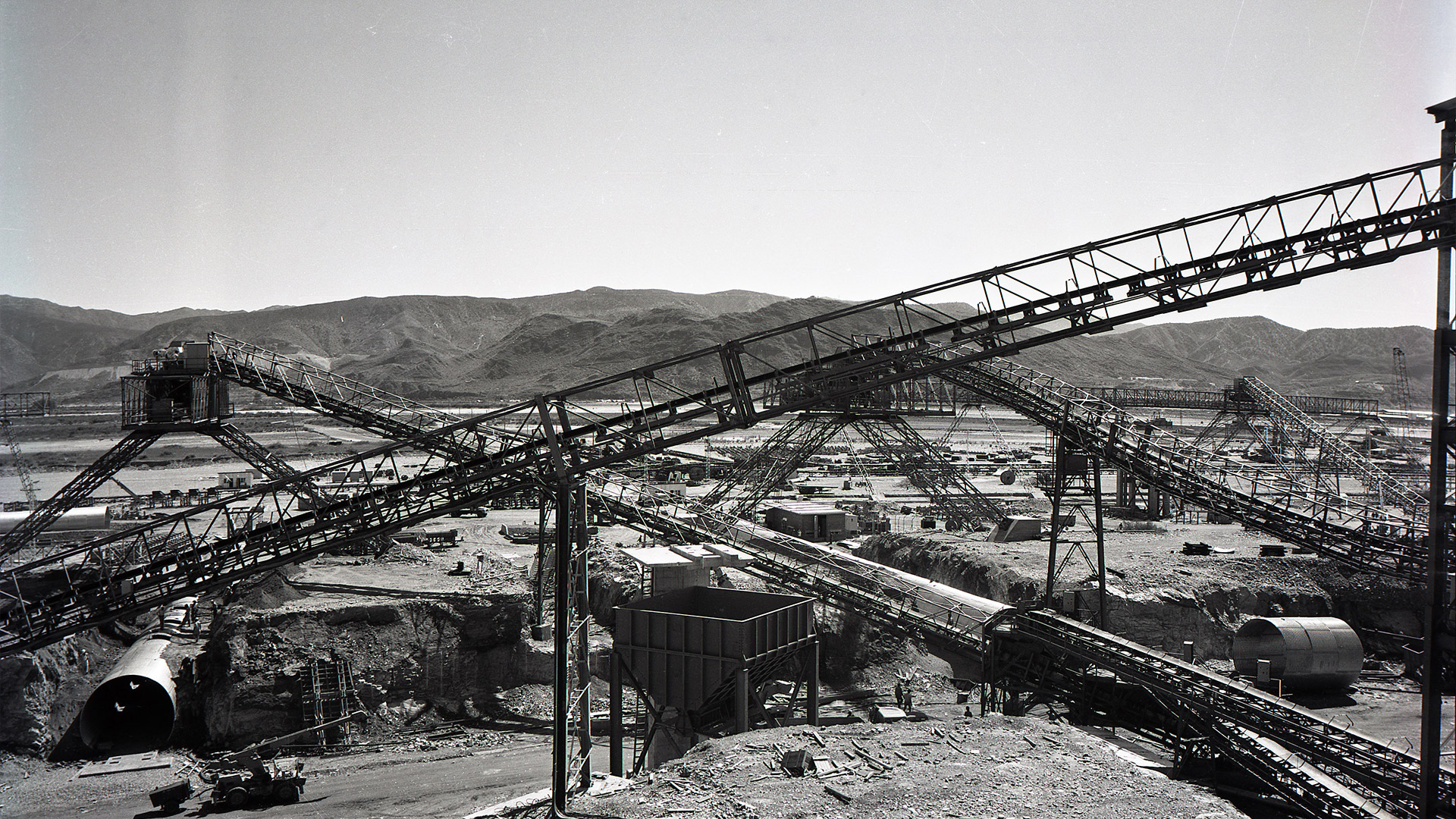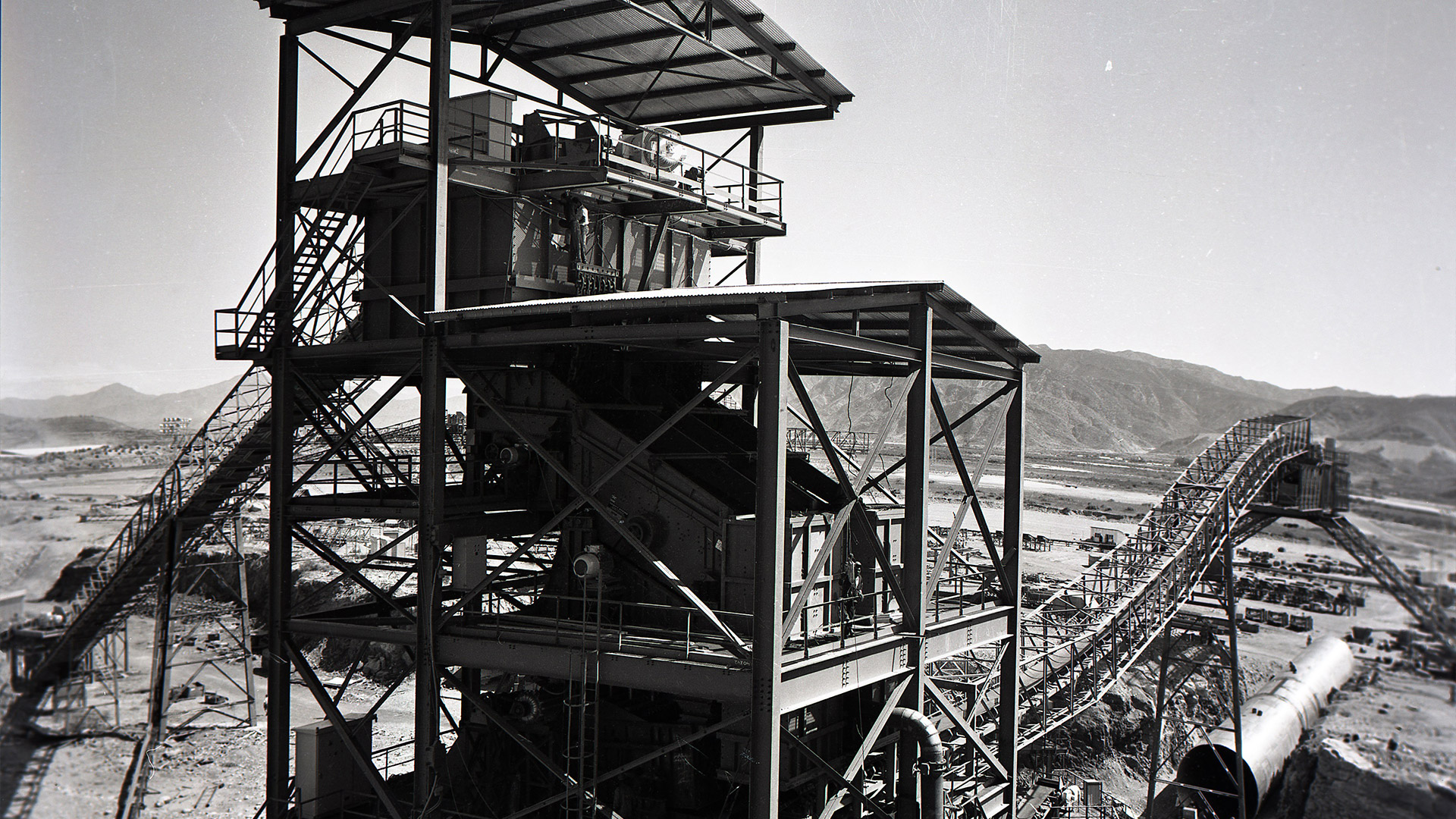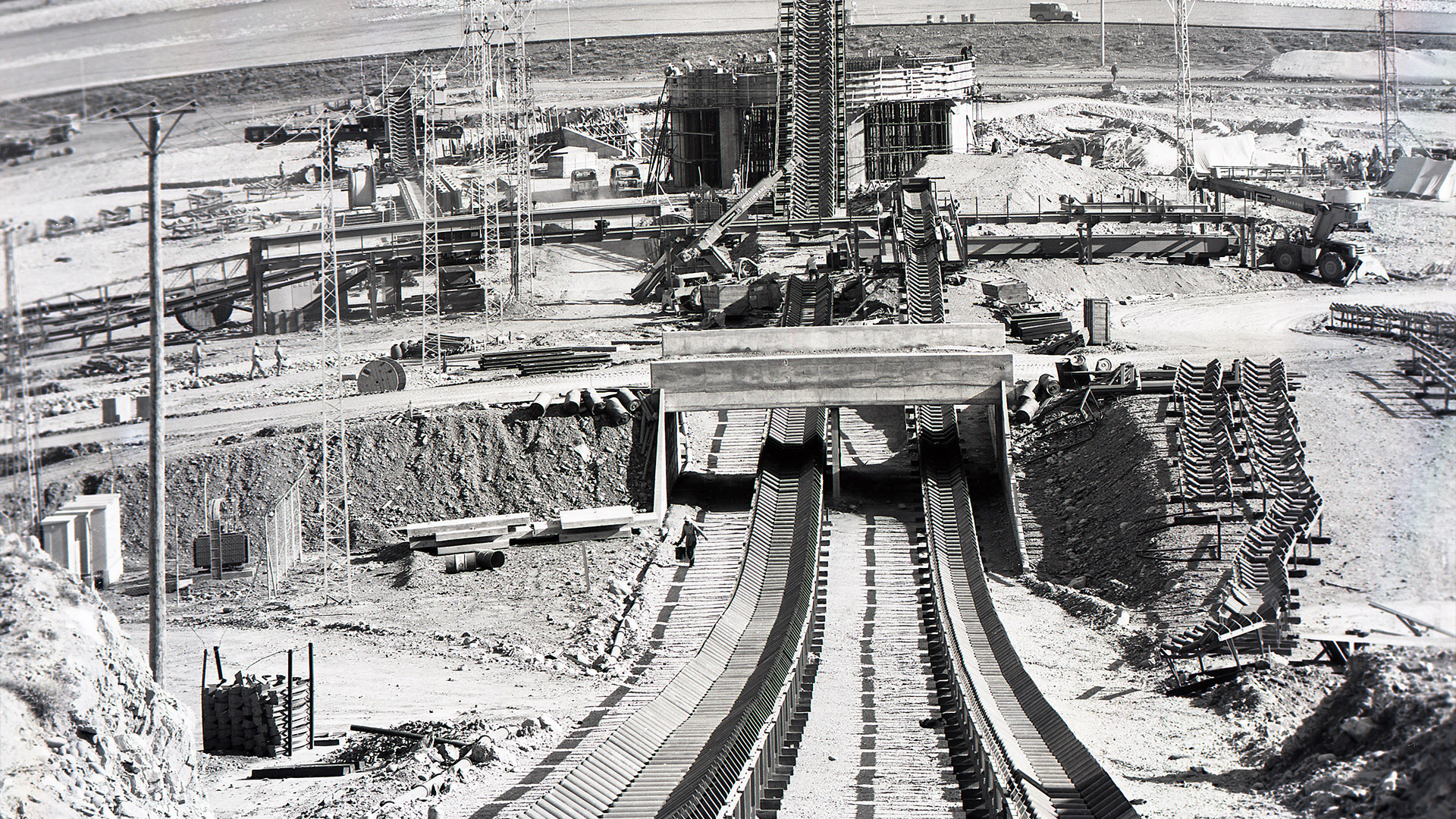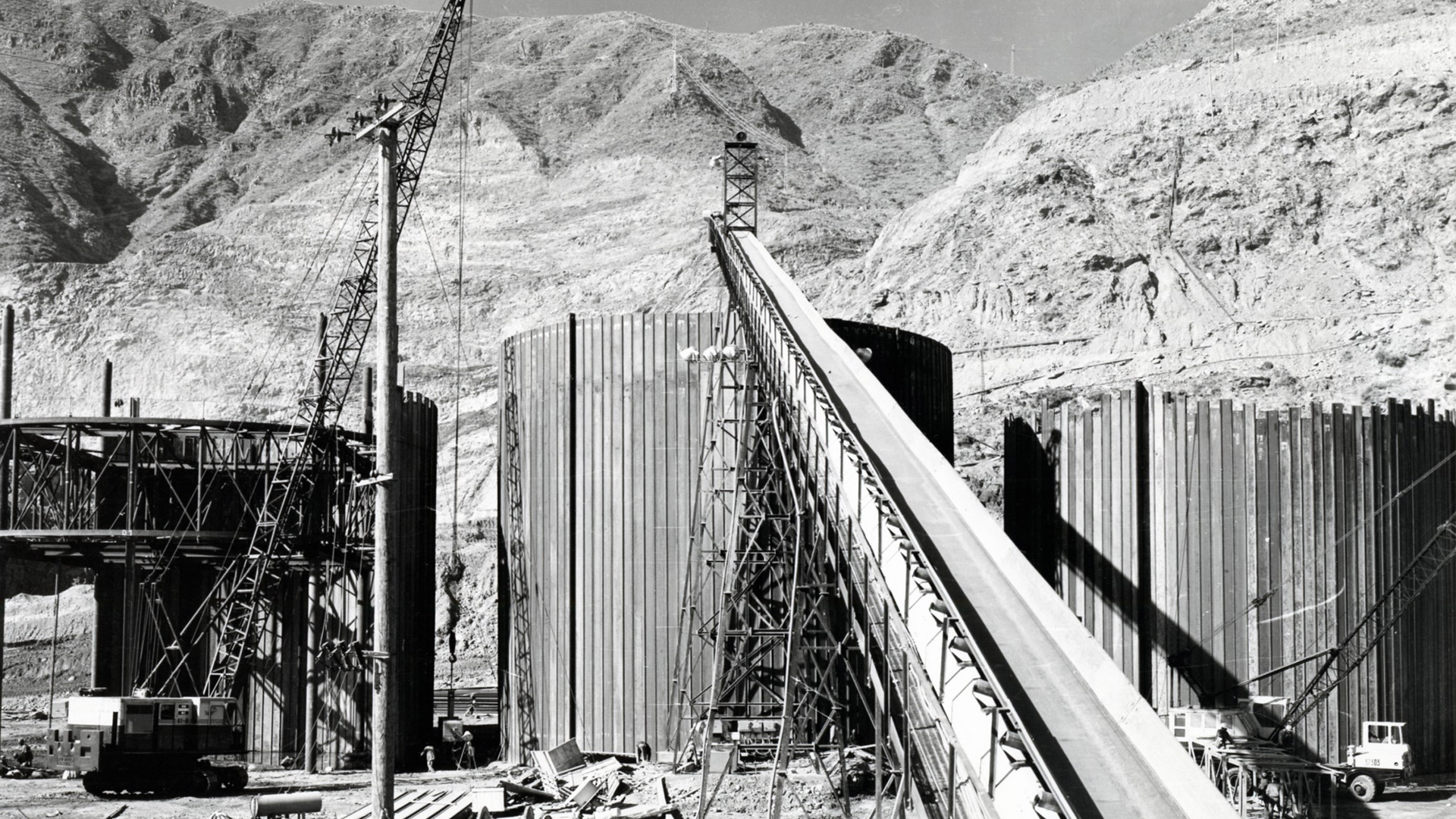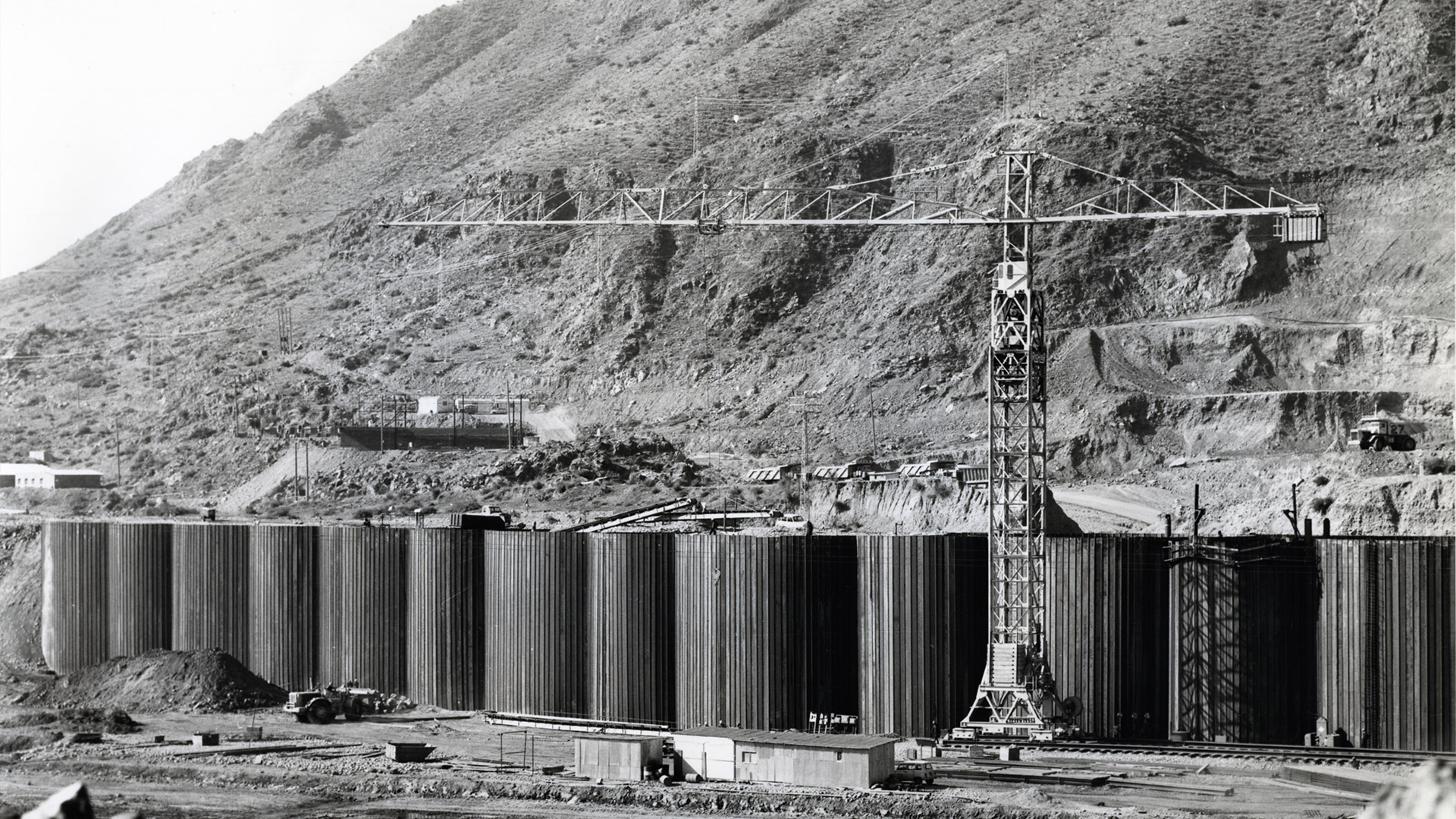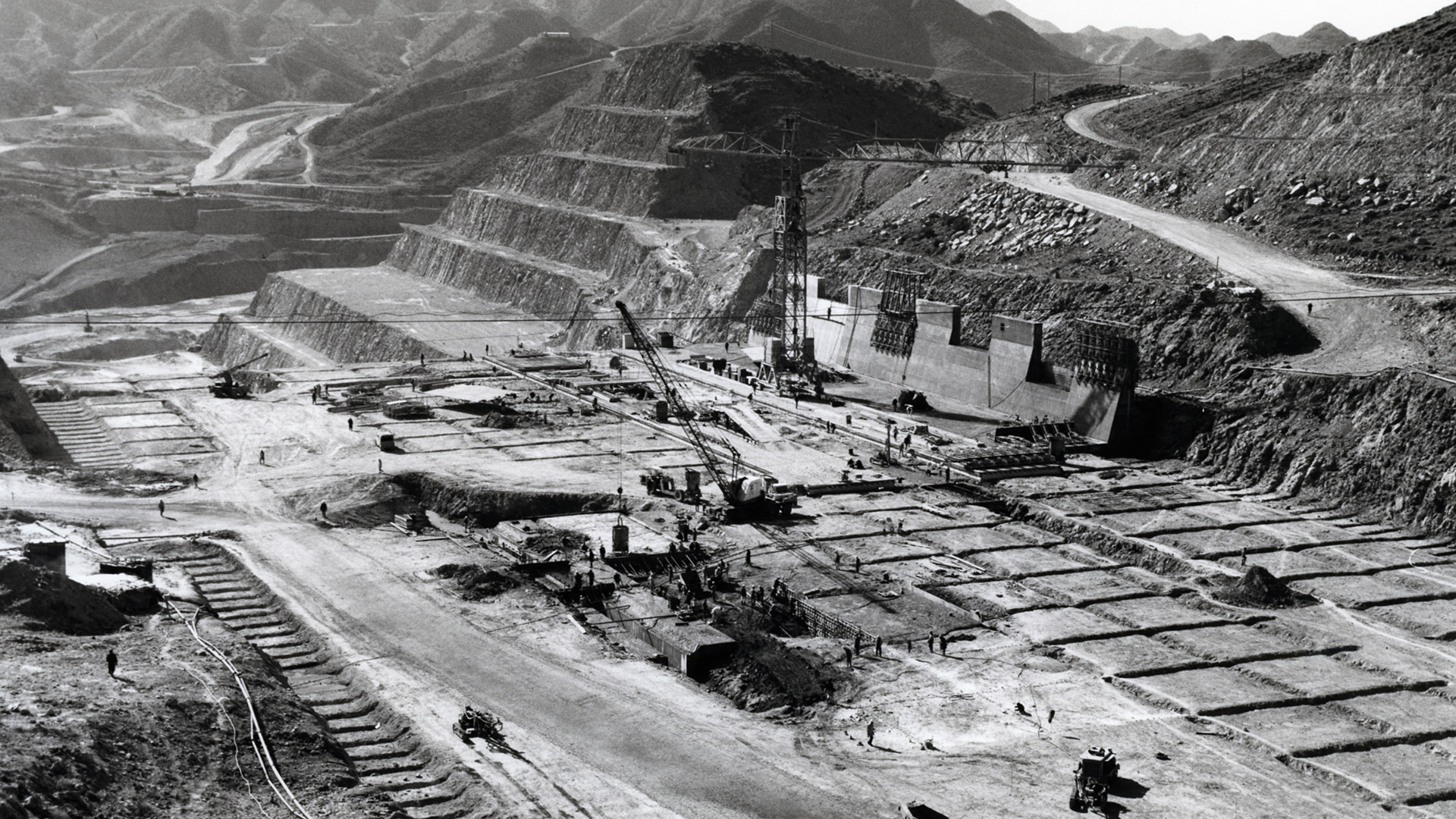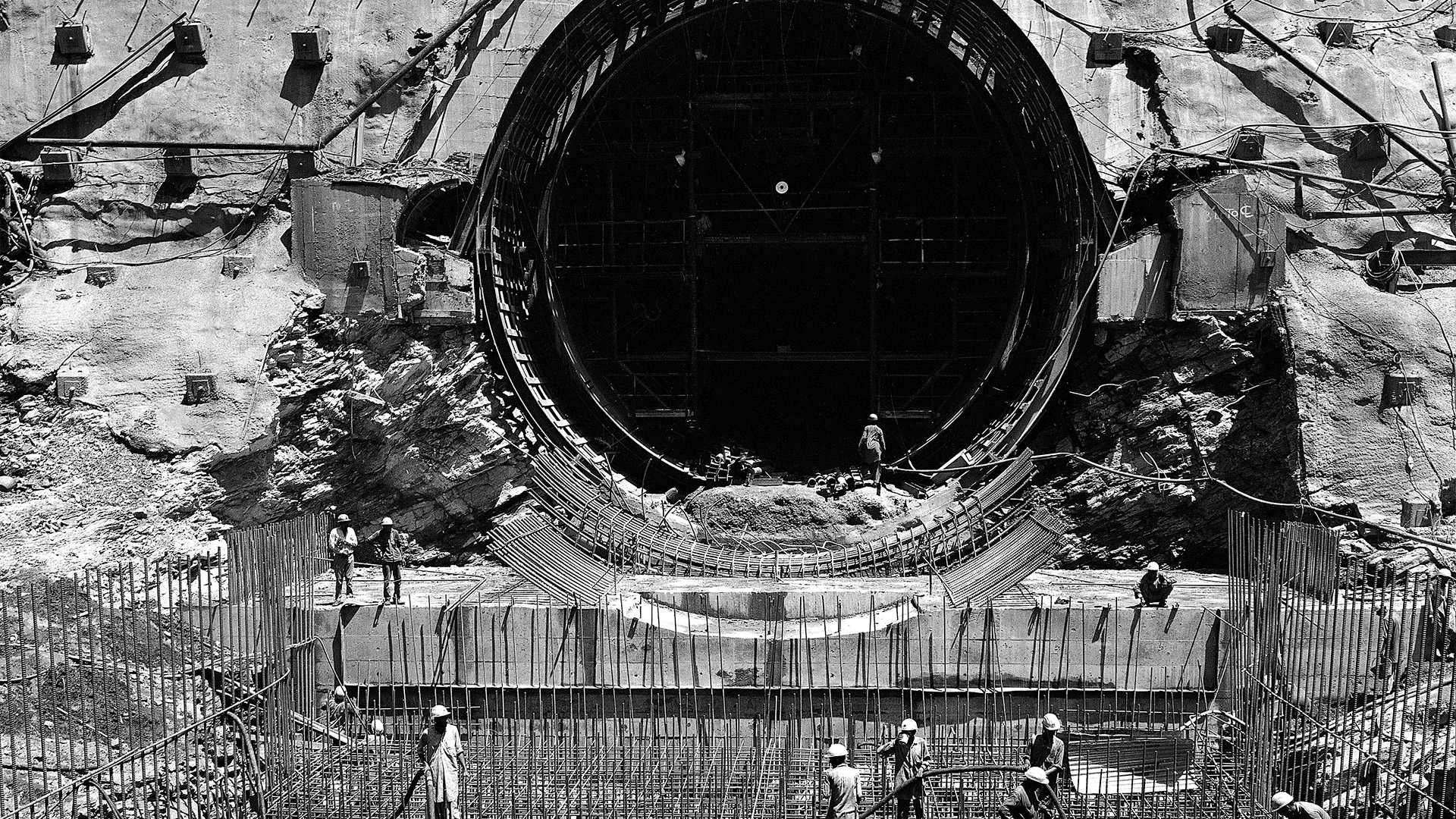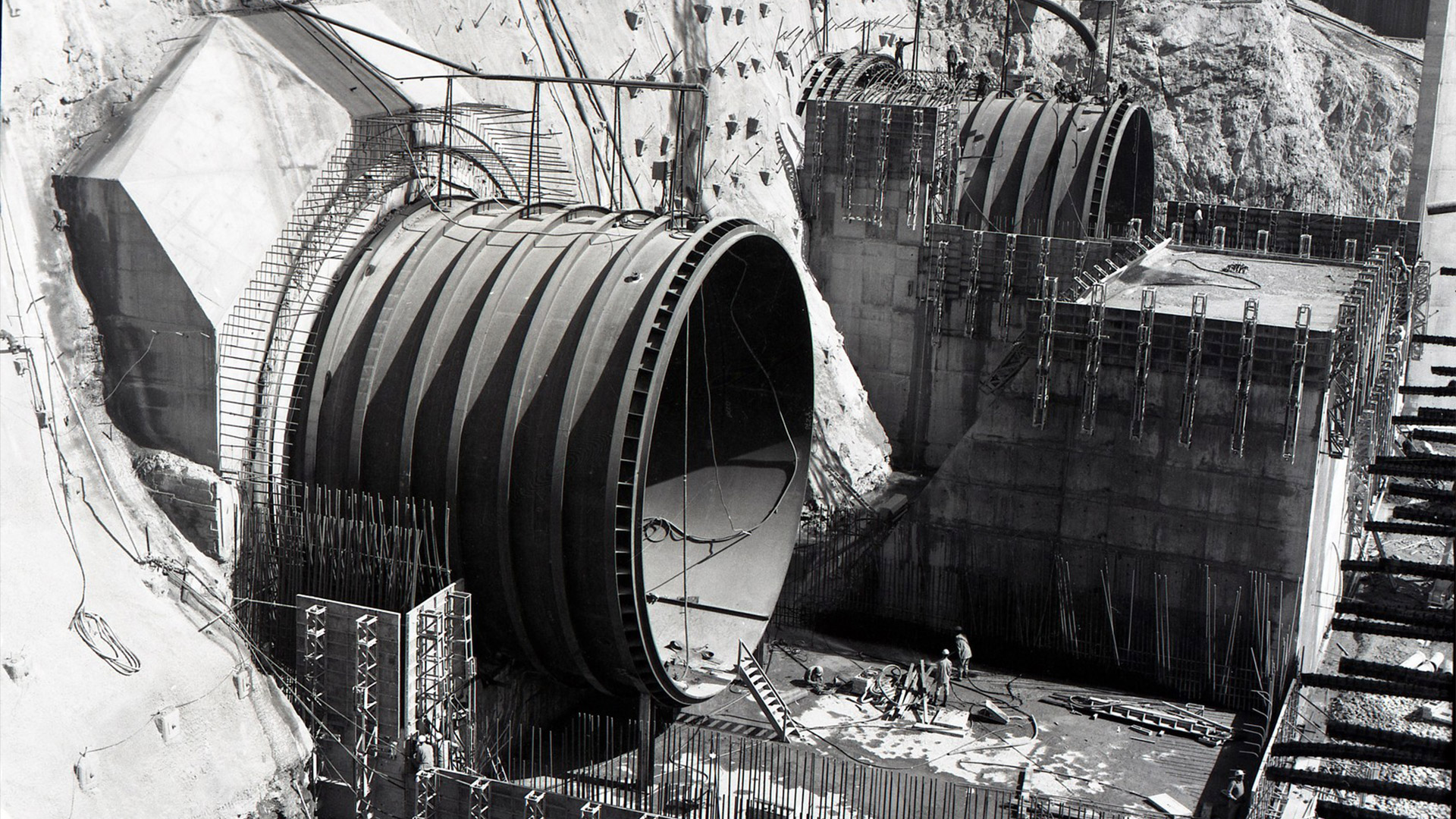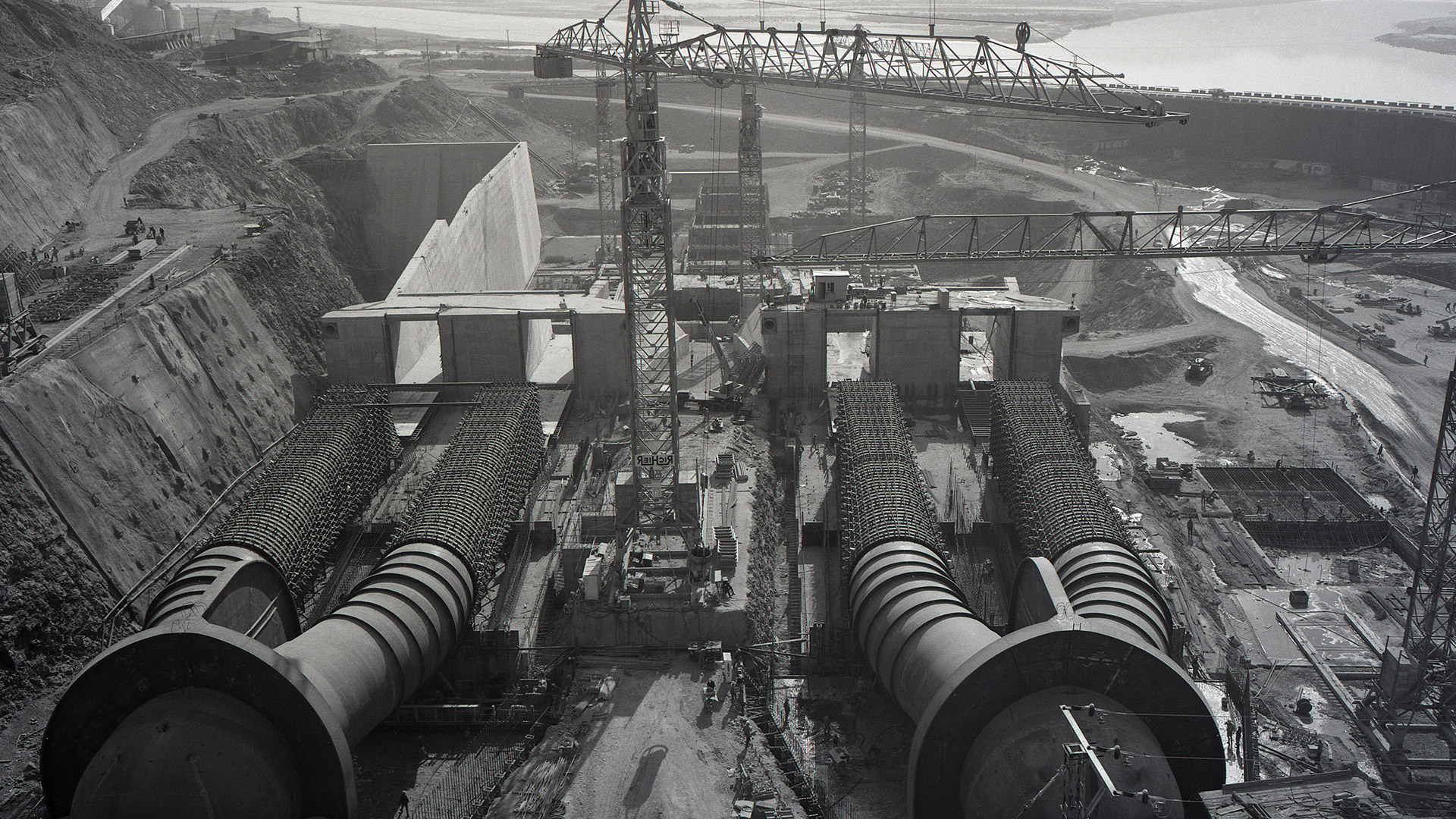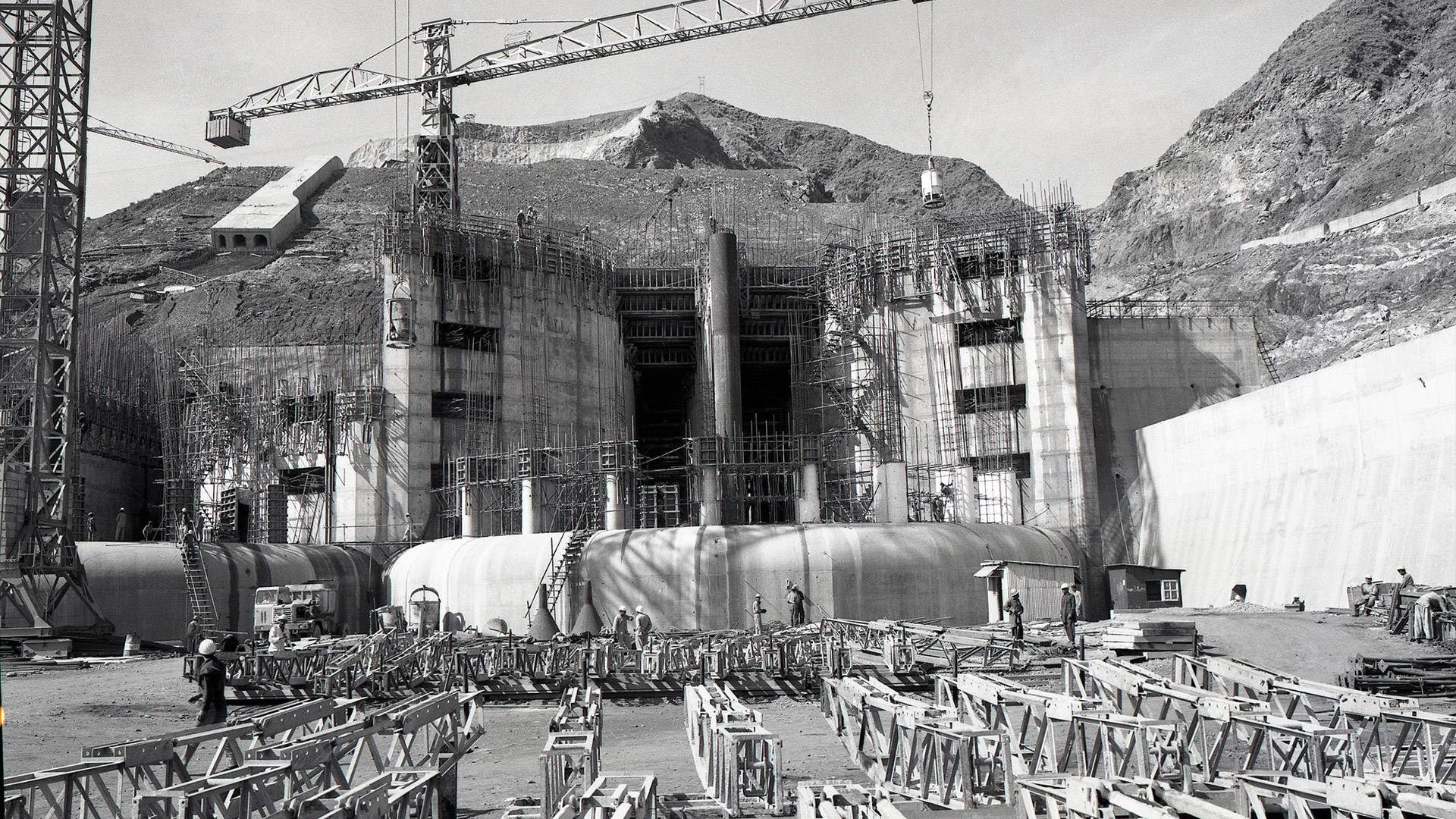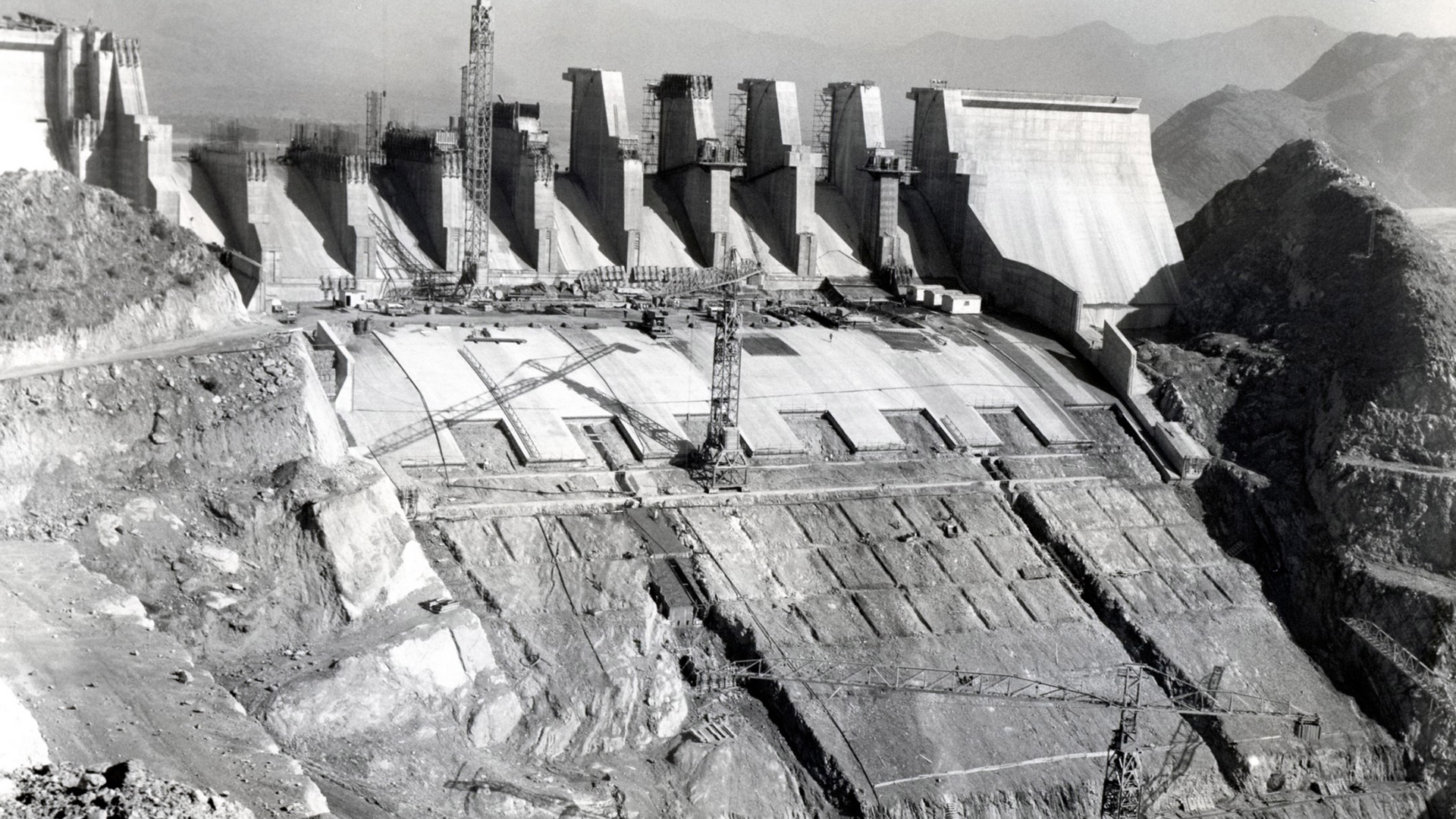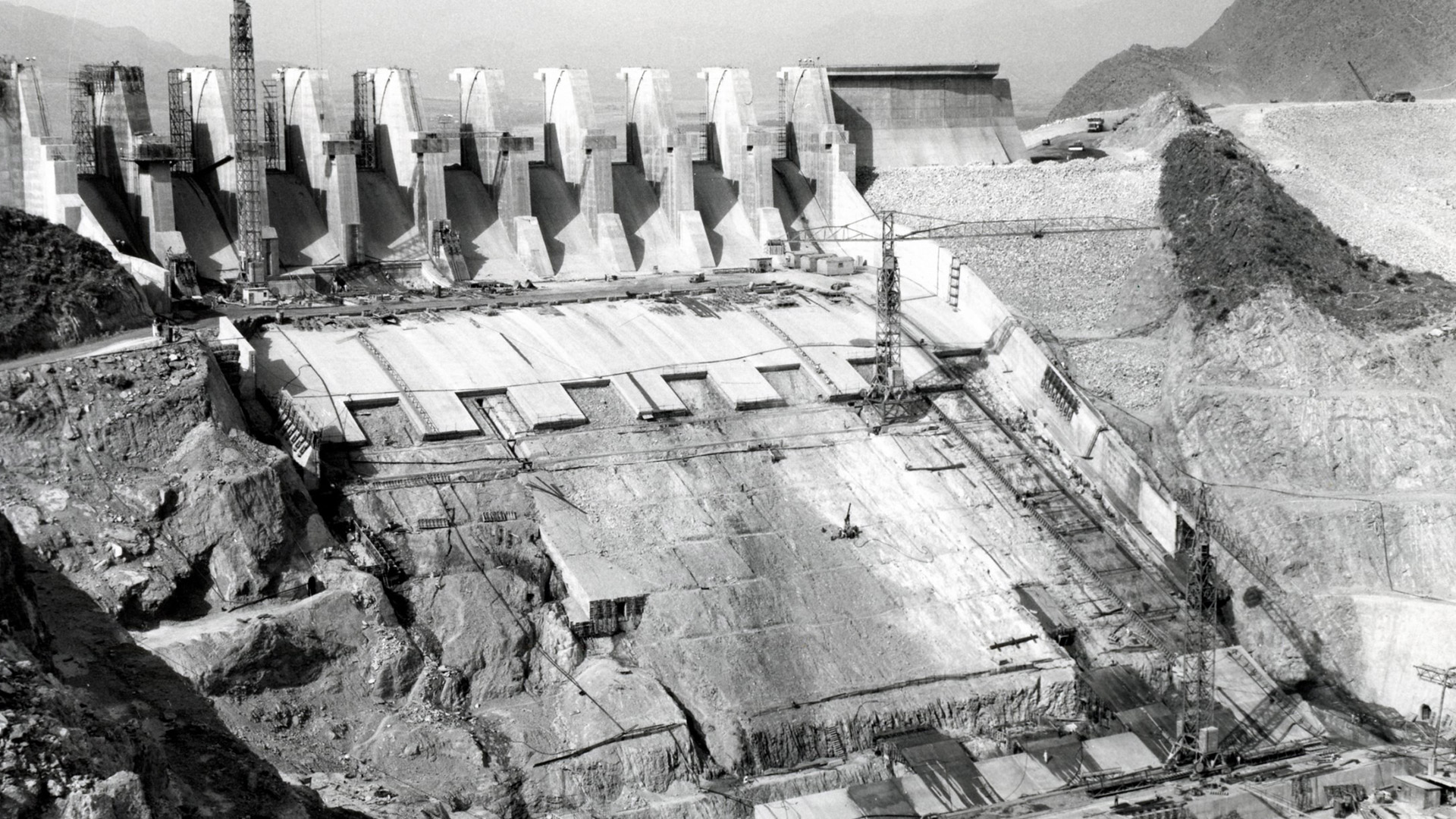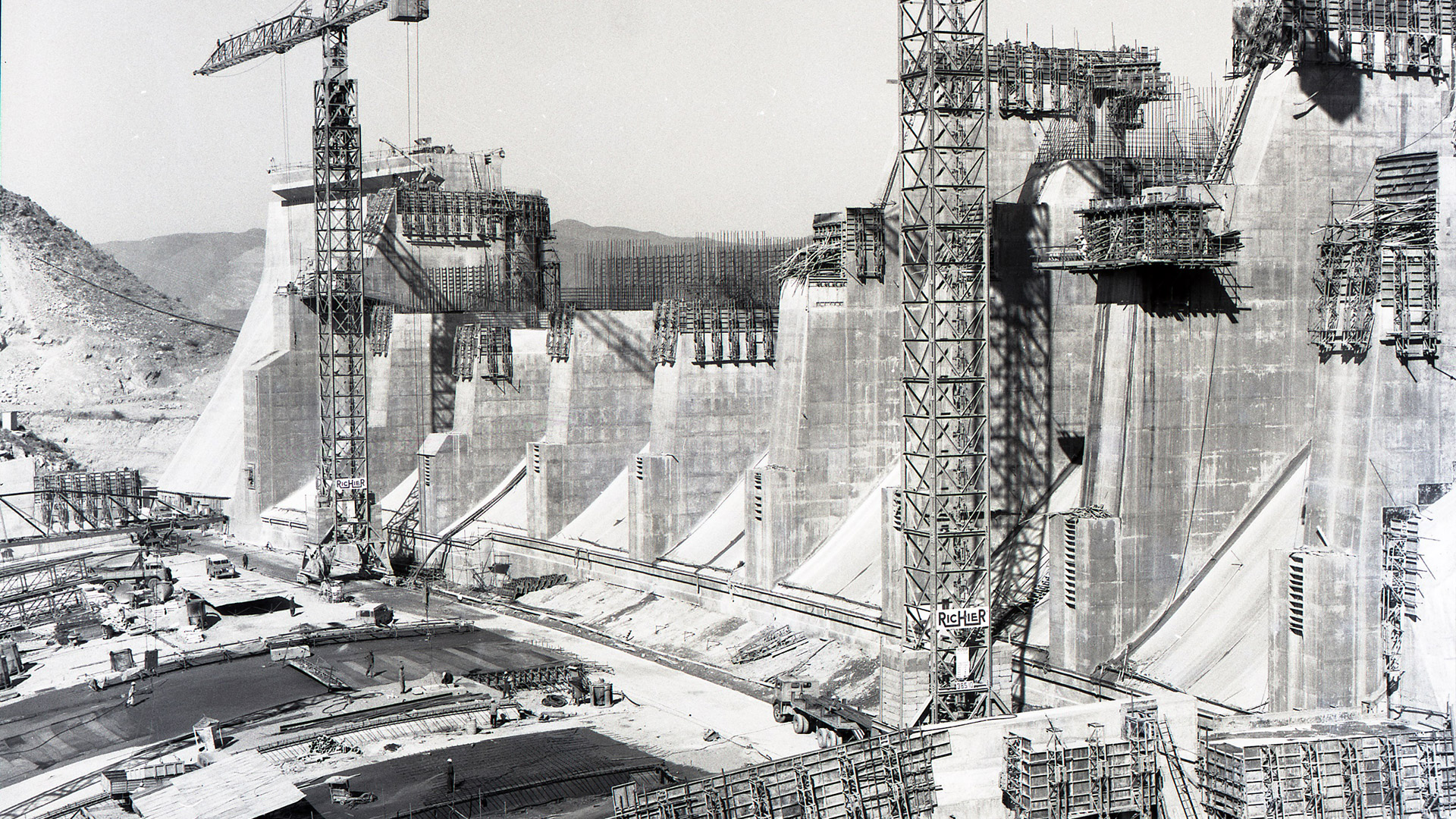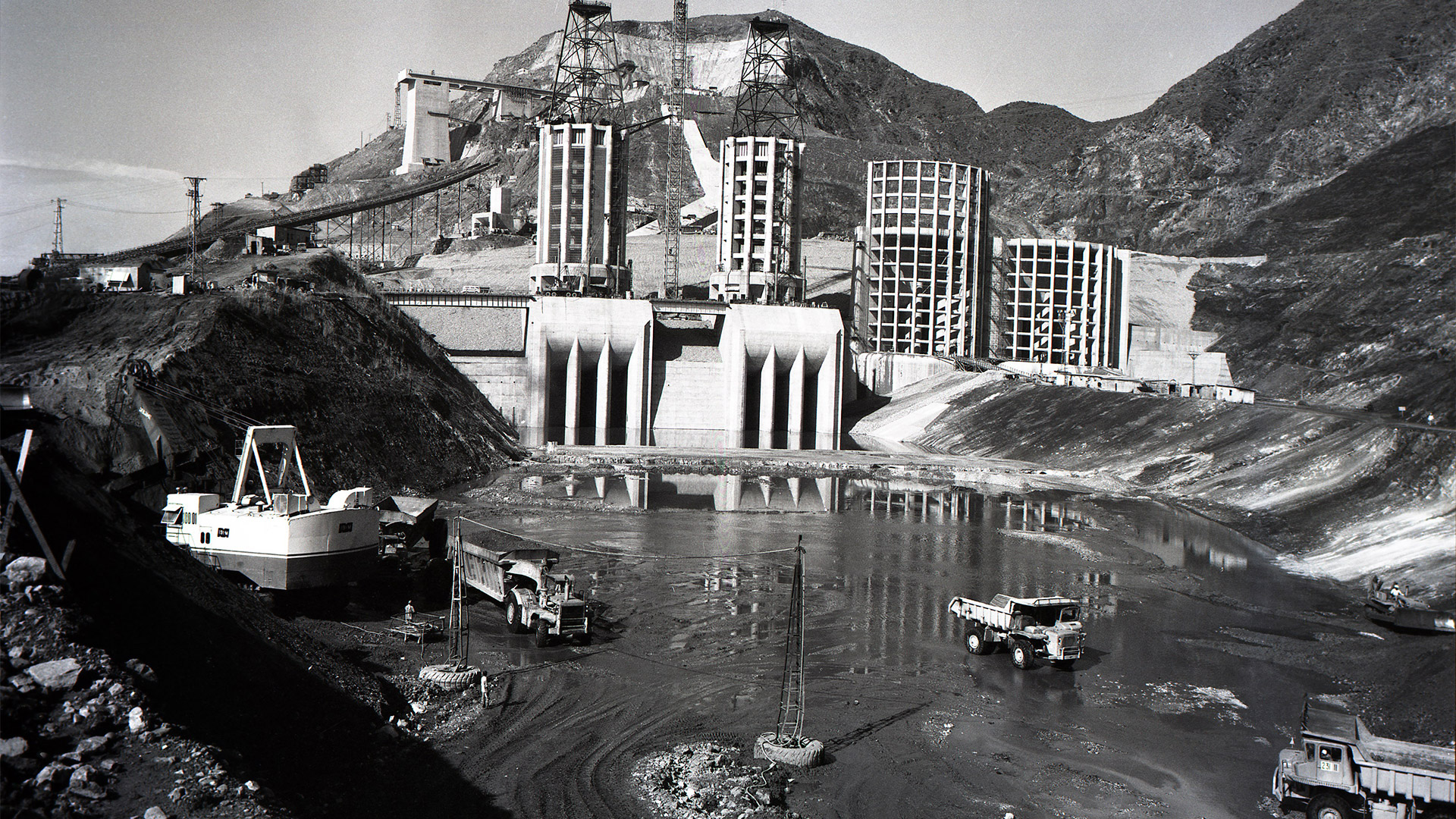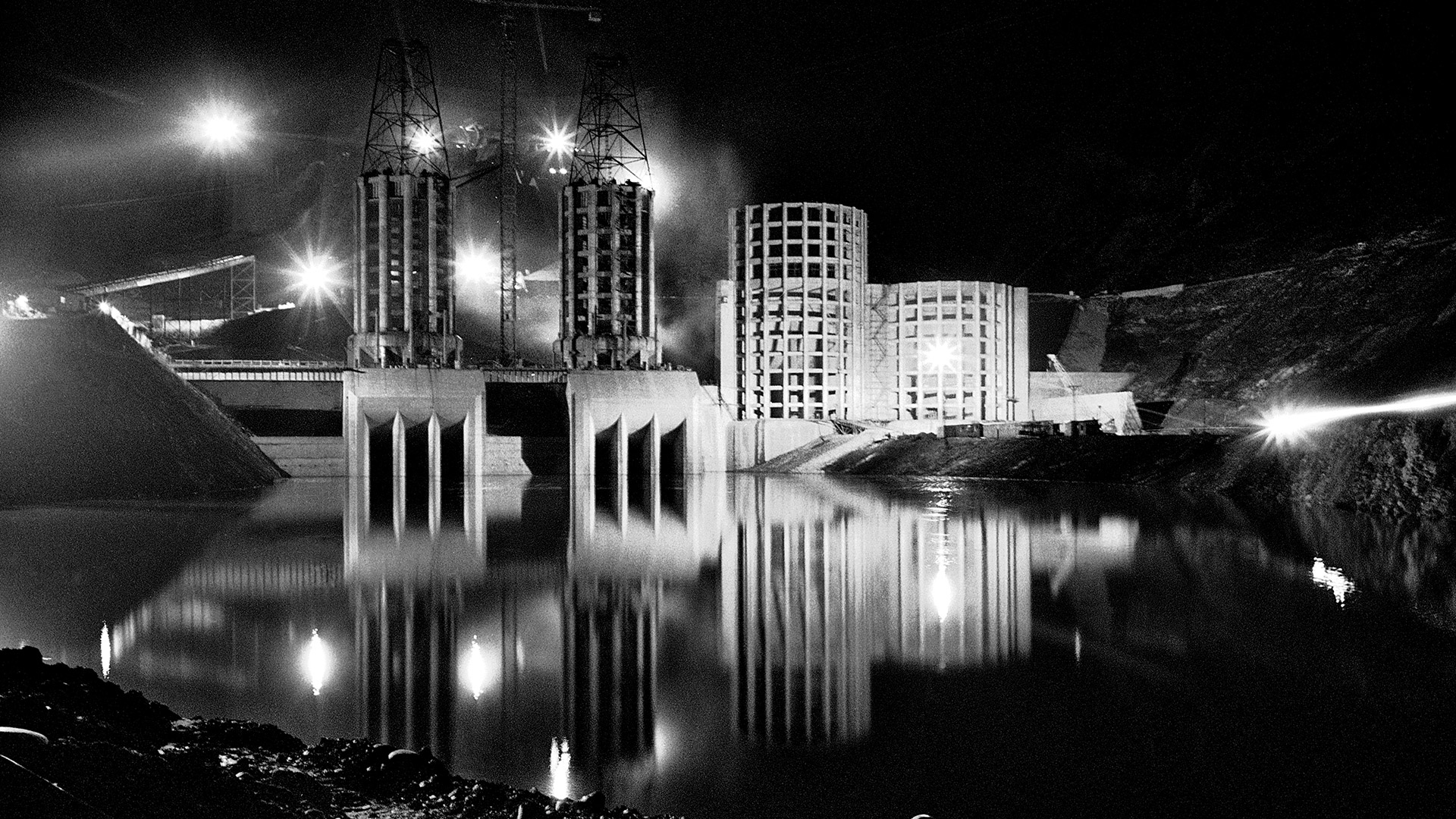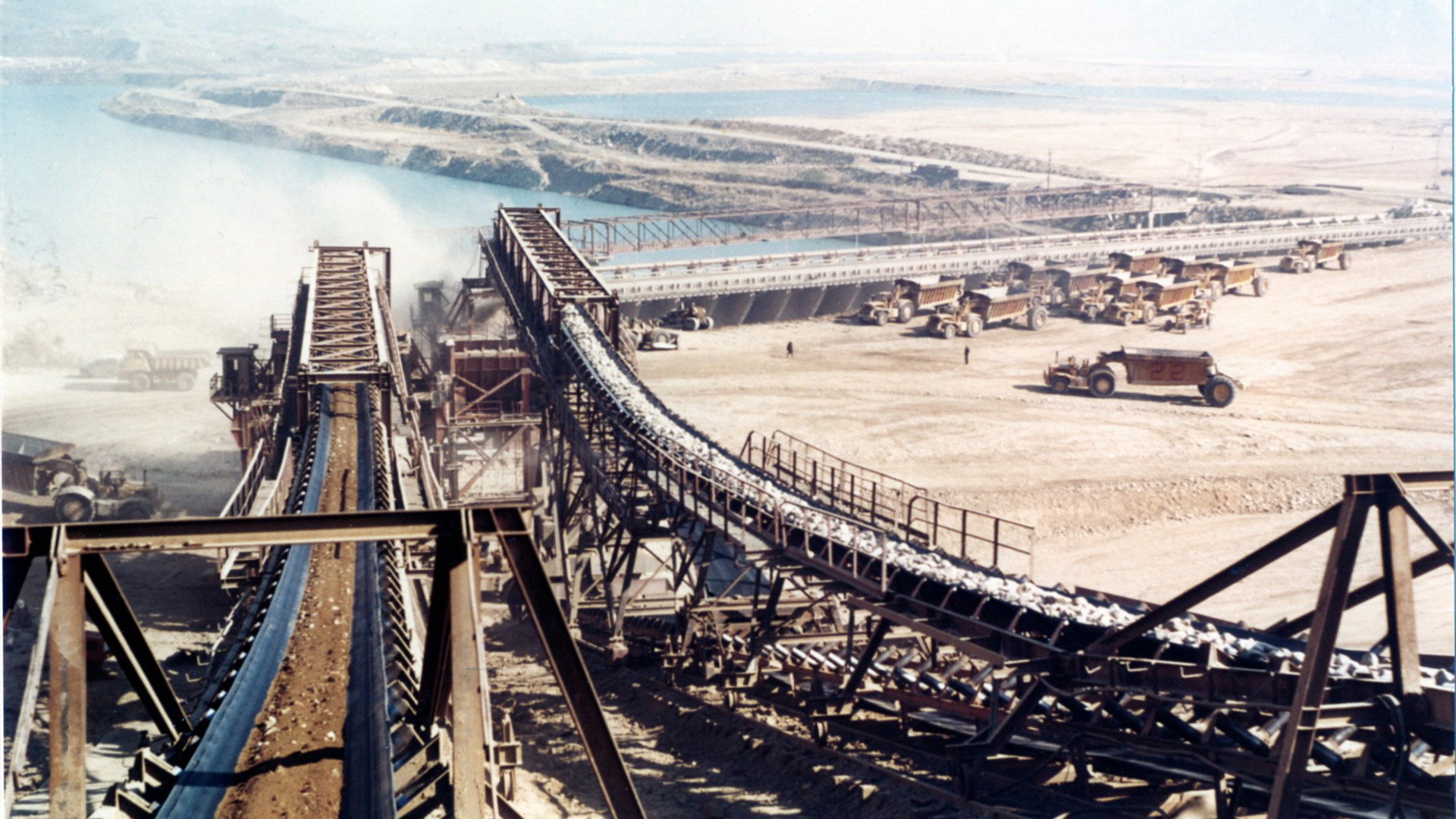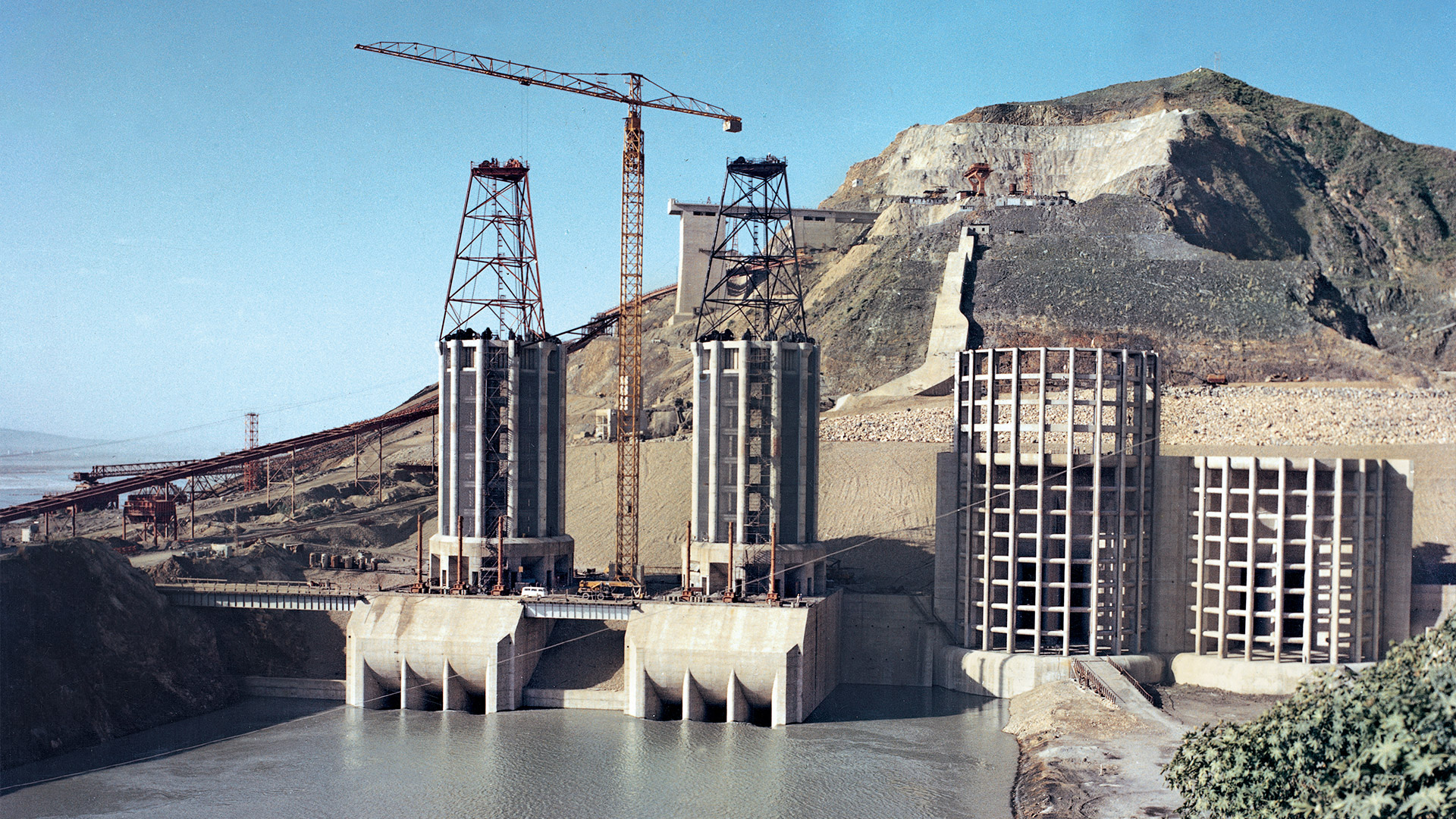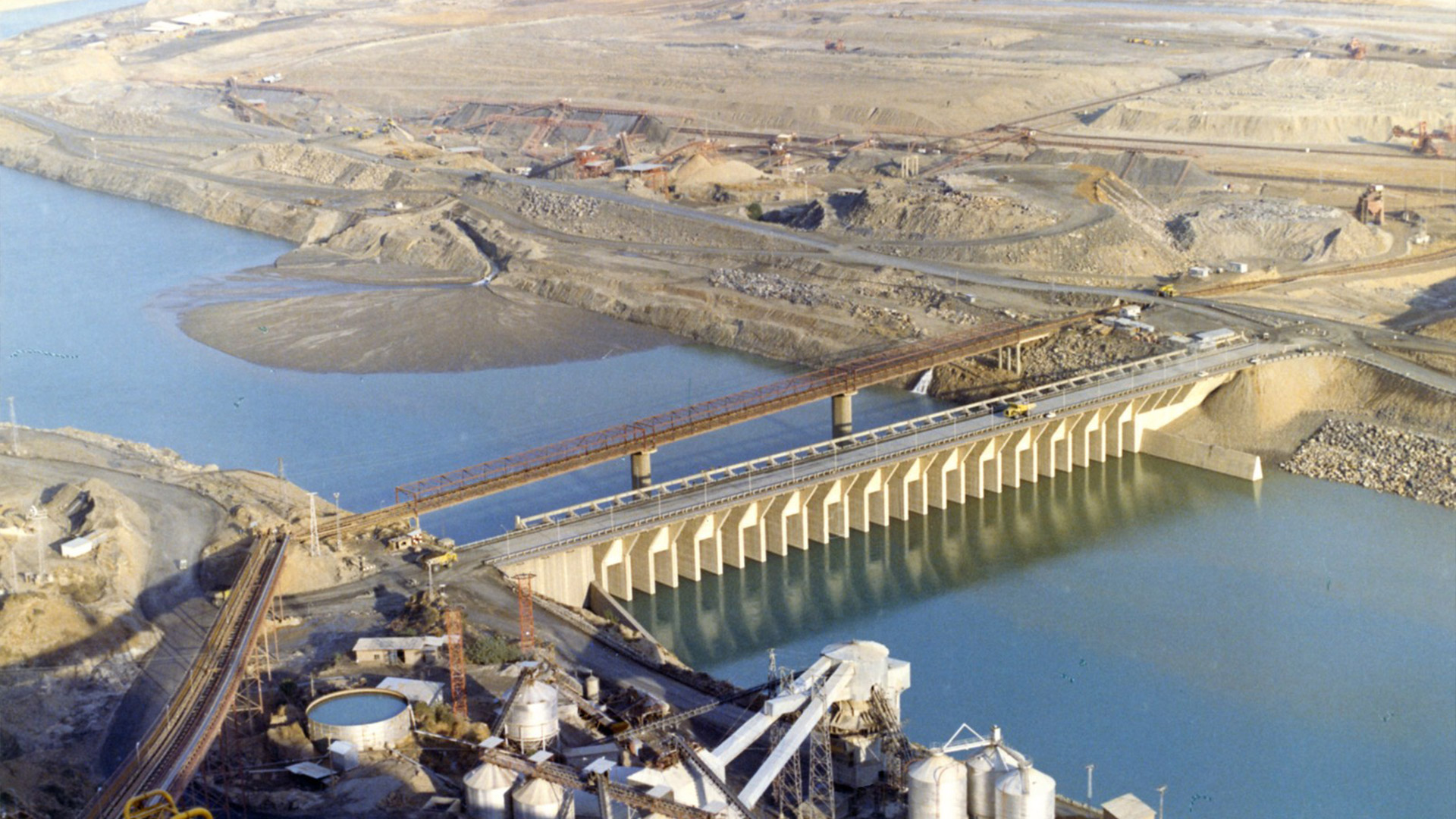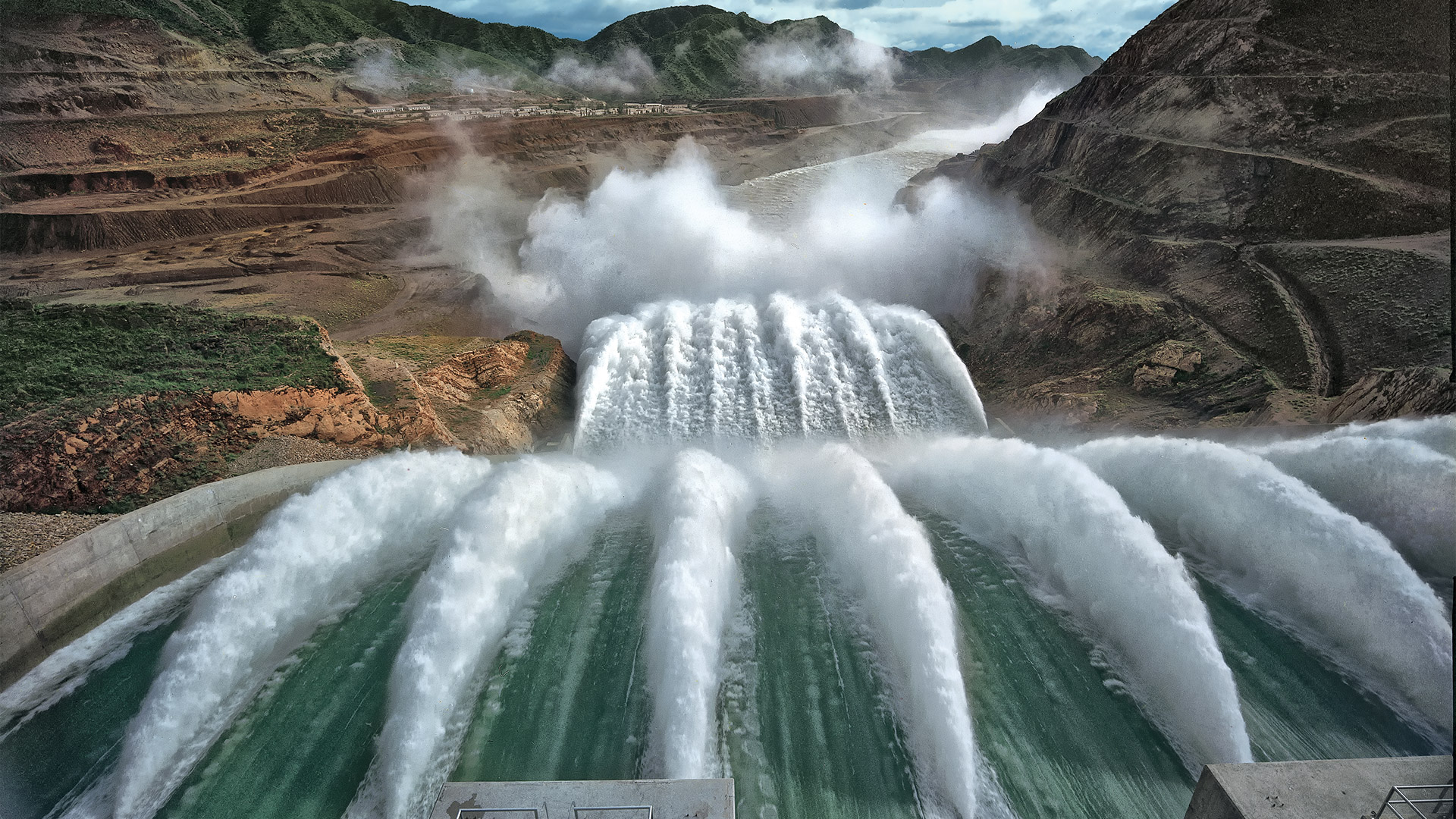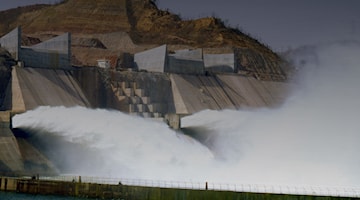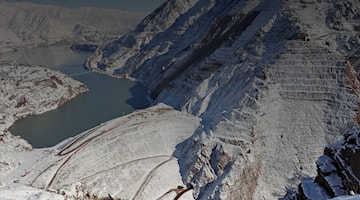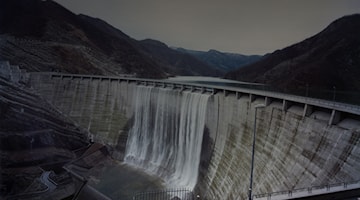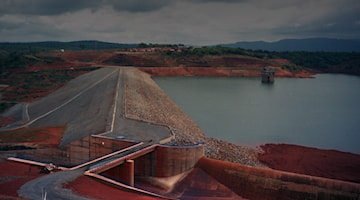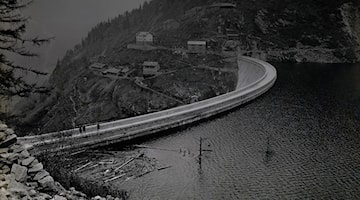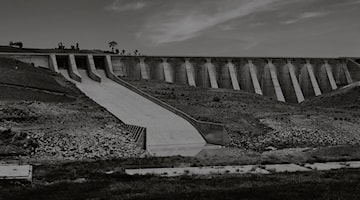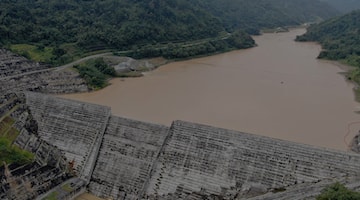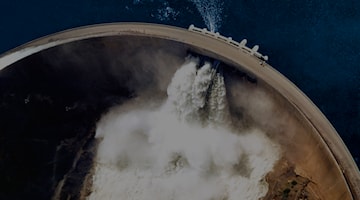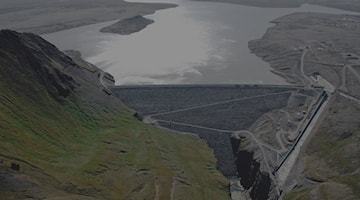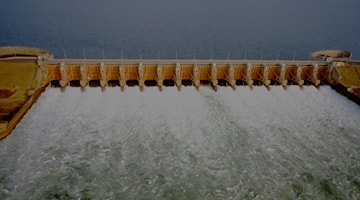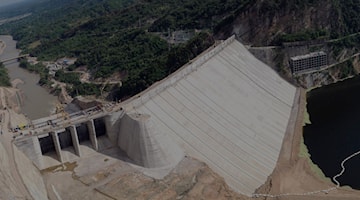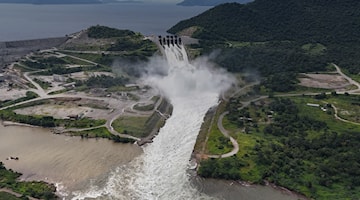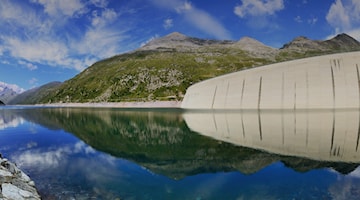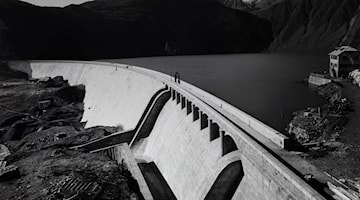More water, less petrol
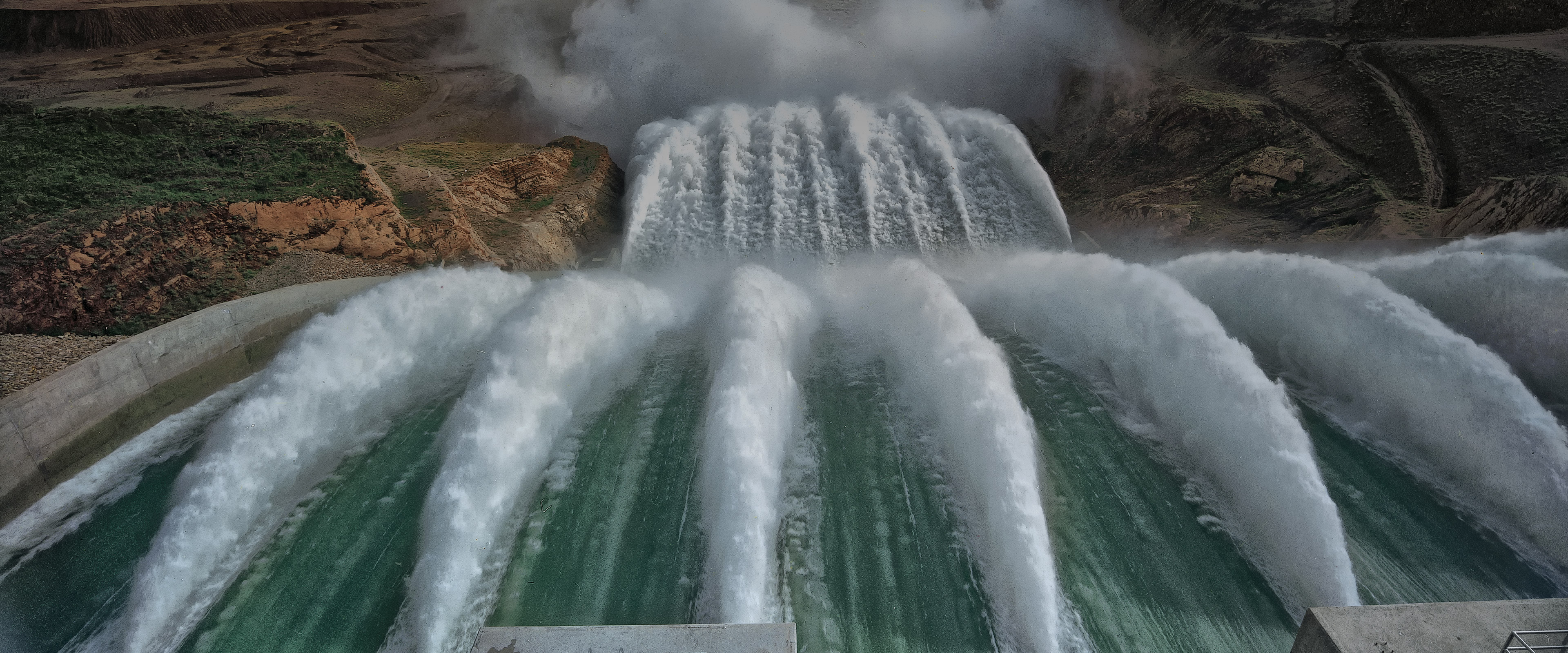
TARBELA HYDROELECTRIC PLANT, PAKISTAN
The Tarbela Hydroelectric Plant was built, in the years 1968-83, where the Indus River leaves the mountain region to enter the immense plain of North-western Pakistan, until it reaches the Indian Ocean. This great project saw the international cooperation of many, and was planned in the '60s by the World Bank.
Five times in dimension, compared to the largest construction site managed until that moment by construction companies, at the time, it was a colossal construction site with a total of 45 thousand people from 26 nations working in it.
With a reservoir holding 11 billion cubic metres of water, the Tarbela dam with its powerhouse generates electricity and water for irrigation uses.
Besides the main dam made from earth and rock, among the world's largest in its category (148 metres high, 2,740 metres long, 121,000,000 m3 of capacity), this complex water engineering system includes two auxiliary dams (with an overall capacity of 15,500,000 m3), a service spillway and an auxiliary one (used to get ride of the excess water), an open-air powerhouse with four turbine generating groups of 175MW each, two tunnels to feed them, further three tunnels to make the water to be used for irrigation purposes flow (in a nation, where agriculture is still the main economic sector).
In the 80's, an additional powerhouse further implemented the dam's hydroelectric capacity, which provides roughtly 20% of the nation's energy needs. The environmental benefits are also significant, since the increase in the production of hydroelectric energy lowered the demand of petrol to feed thermal plants.
The dam also contributed to containing the floods caused by the monsoon season, which are worsened by climate changes, flooding everywhere with disastrous erosions: during summer 2022, for example, weeks of torrential rain submerged a third of the nation, causing landslides and inundations, impacting 33 million people. In the following years, such disasters recurred in various parts of the country, particularly in 2024 near the border with Afghanistan, causing thousands of deaths and injuries, as well as significant damage to infrastructure.

THE WORK AND THE TECNIQUE
METRES MAIN DAM HEIGHT
METRES MAIN DAM LENGTH
M³MAIN DAM VOLUME
M³ TOTAL AUXILIARY DAM VOLUME
M³ COFFERDAM VOLUME
MEGAWATT INSTALLED CAPACITY
West Pakistan Water and Power Development Authority (WAPDA)
Tarbela Joint Venture con Impresit-Girola-Lodigiani (later part of today's Webuild Group) as leader.
Construction operations for the plant were entrusted to a joint venture led by Impresit-Girola-Lodigiani, which later became part of the group now known as Webuild.
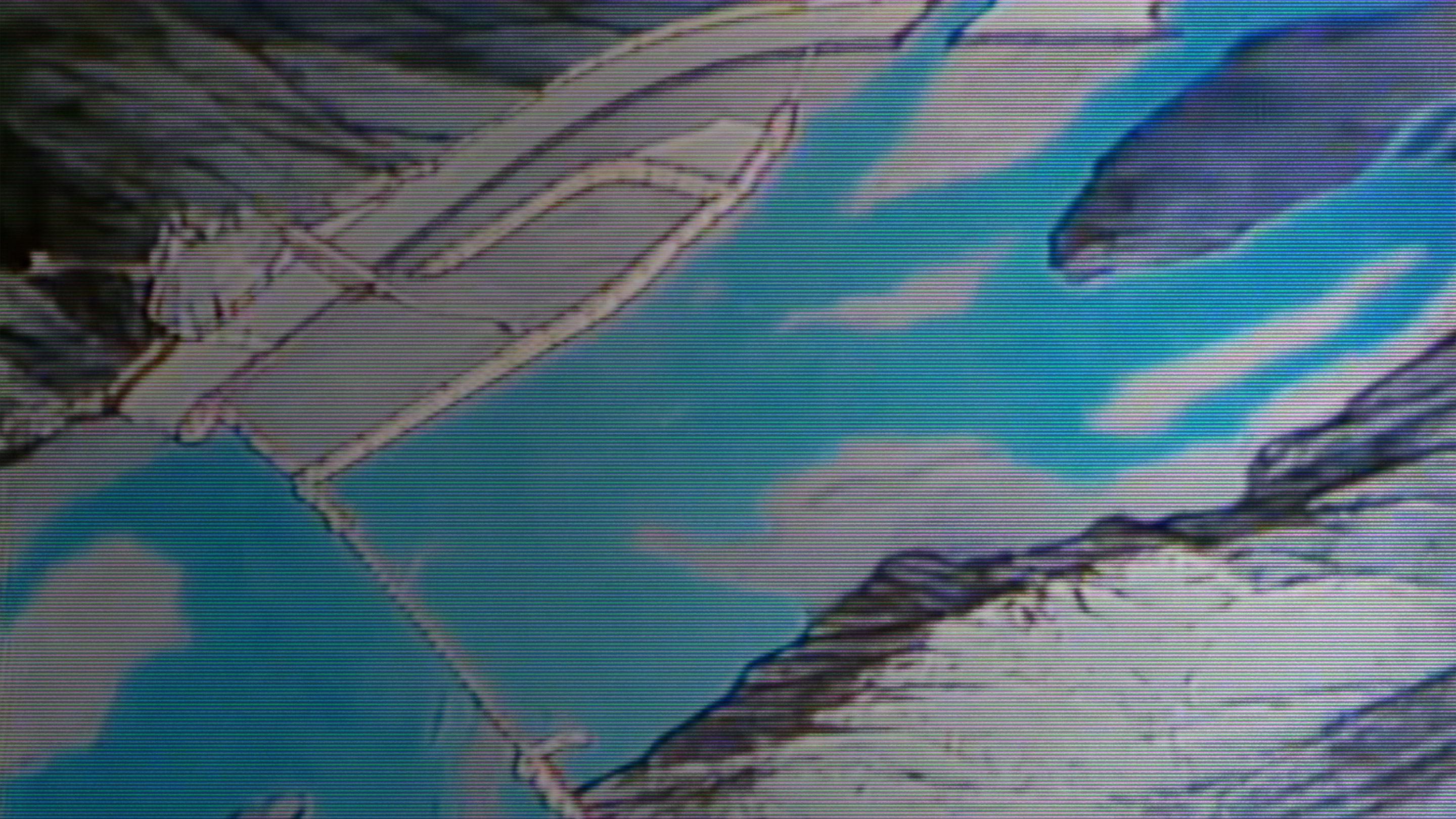
Tarbela Dam Project on the Indus River
(Pietro Magni, 1977)
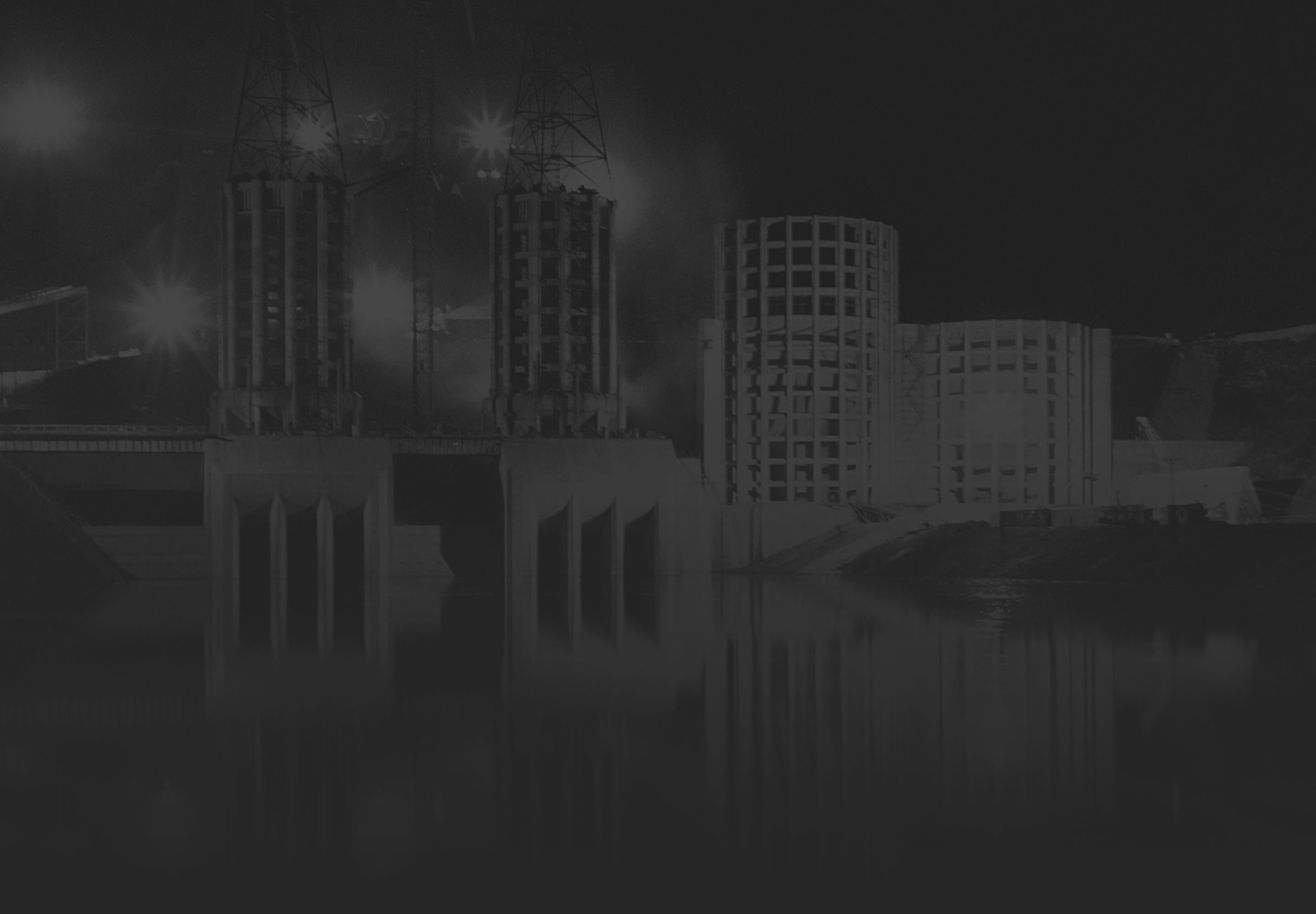
CULTURAL INSIGHTS
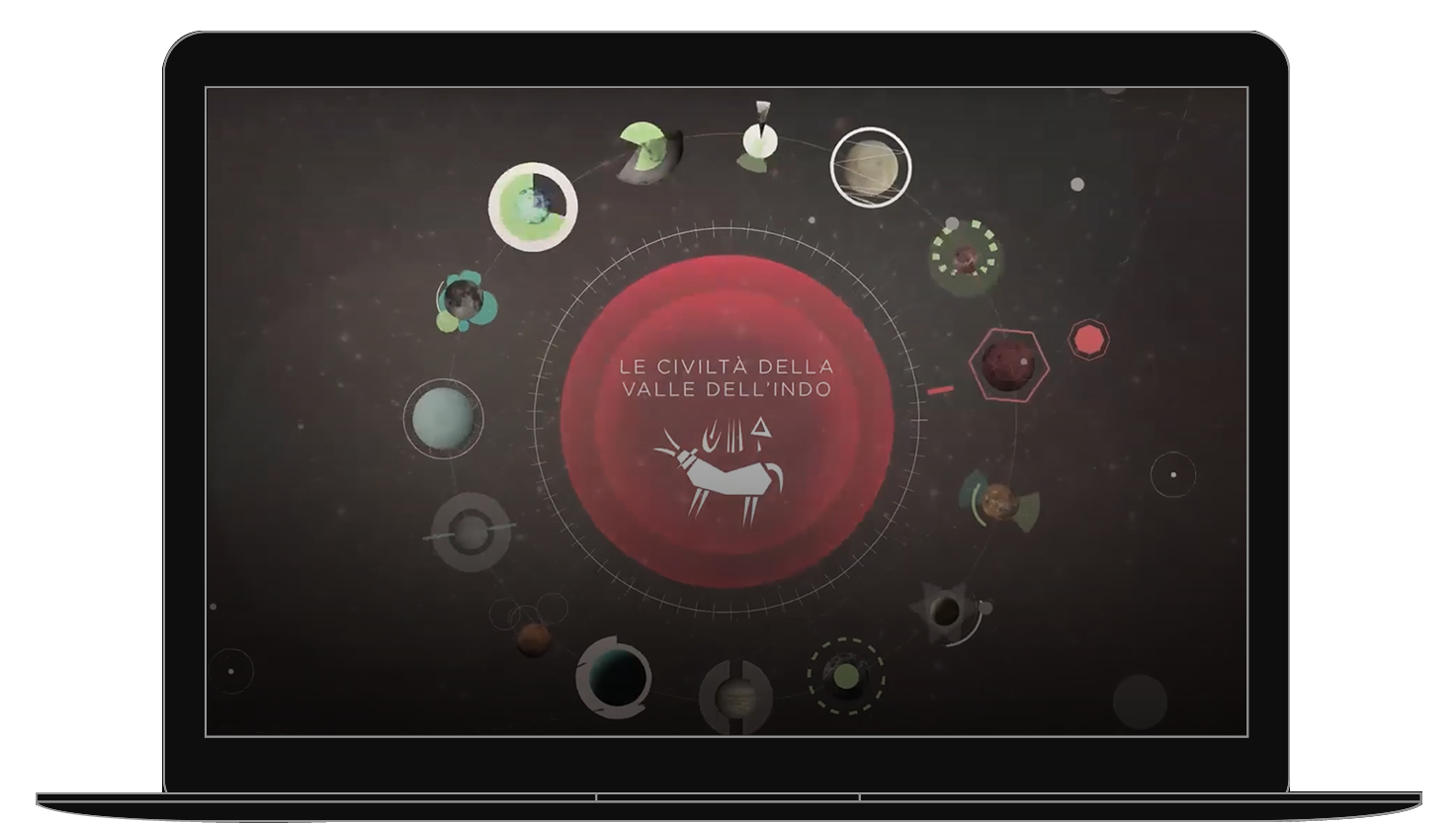

The largest water development project
The plant was designed to generate energy and regulate water availability for irrigation in an area marked by dry summers, heavy rainfall, and destructive floods. Pakistan, with more than 247 million inhabitants, is the fifth most populous country in the world, where even today 37.5% of the population is employed in agriculture and livestock farming.
In 2023, more than 11 million Pakistanis had no access to electricity, an astonishing figure that places the country in the first quartile of those with the lowest access to electricity.
The Tarbela plant generated more than 12 billion kWh of energy in 2024 and. since its inauguration, has accounted for about 37% of the hydroelectric production of the West Pakistan Water and Power Development Authority, which has had to cope with a rapidly and steadily growing demand. In 2024, Pakistan recorded energy consumption of nearly 111 billion kWh, and total consumption is expected to reach 123.38 billion kWh by 2025, including both industrial and domestic use.
billion kWh of energy generated by the Tarbela plant in 2024





